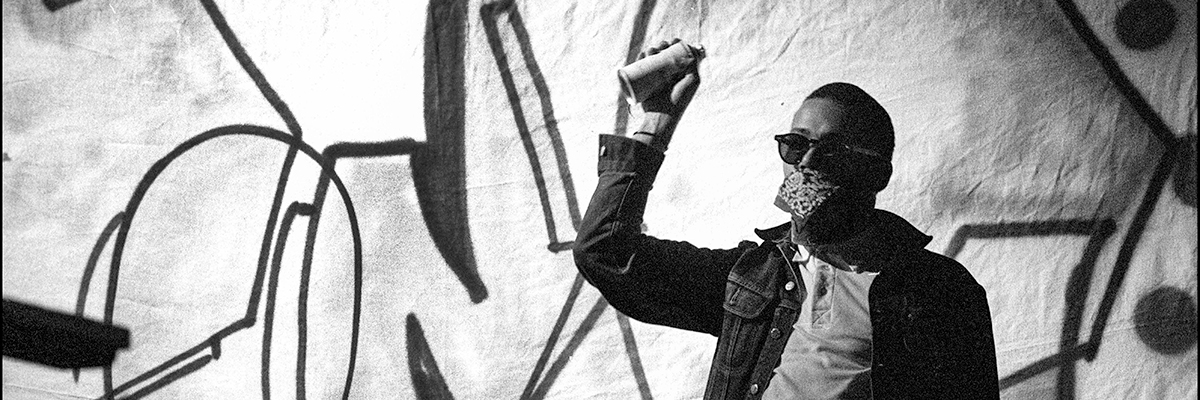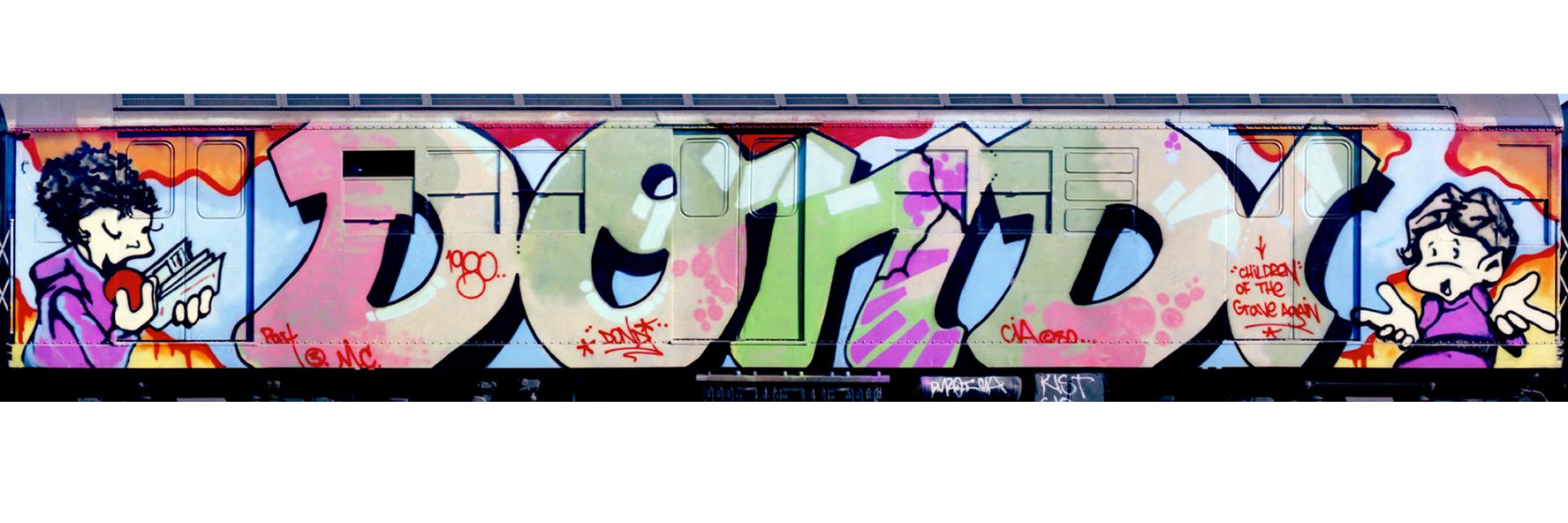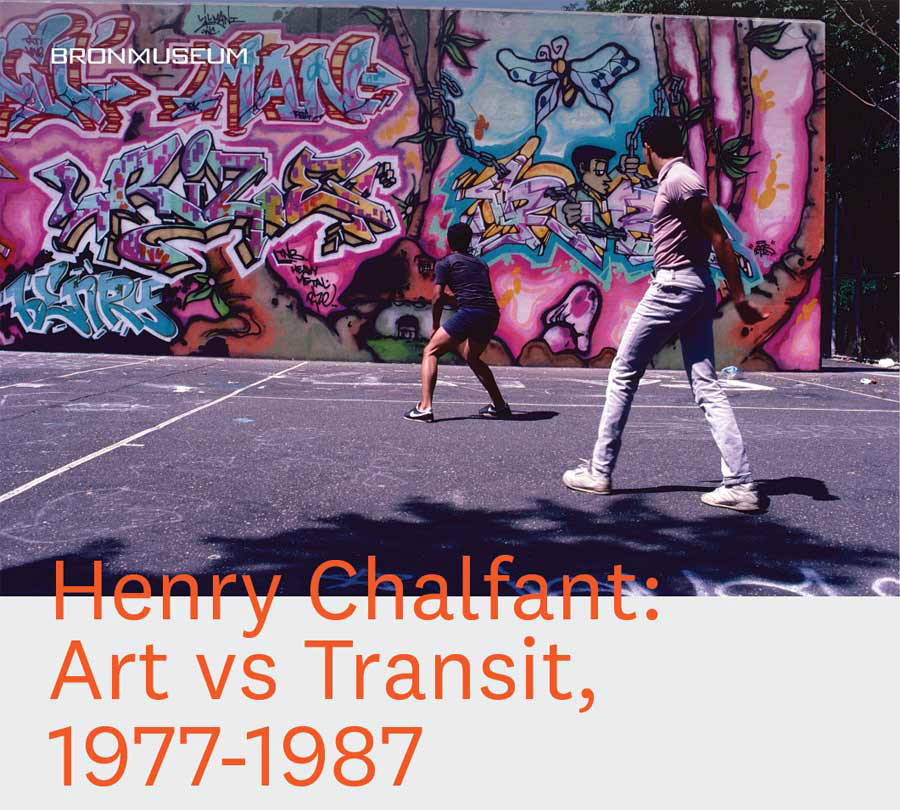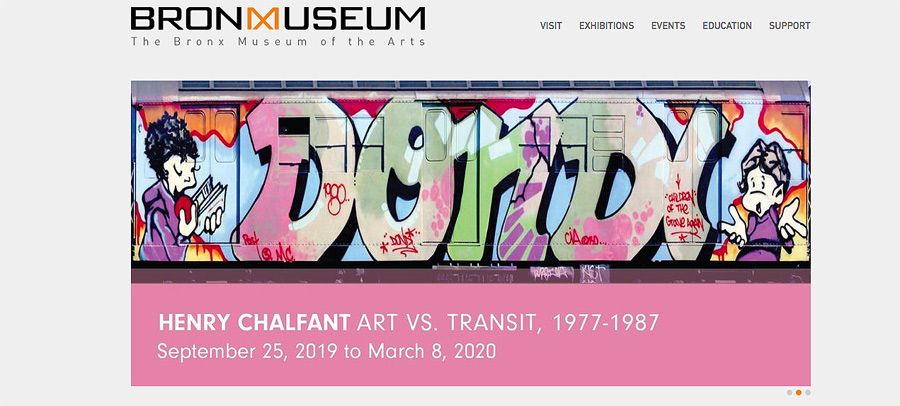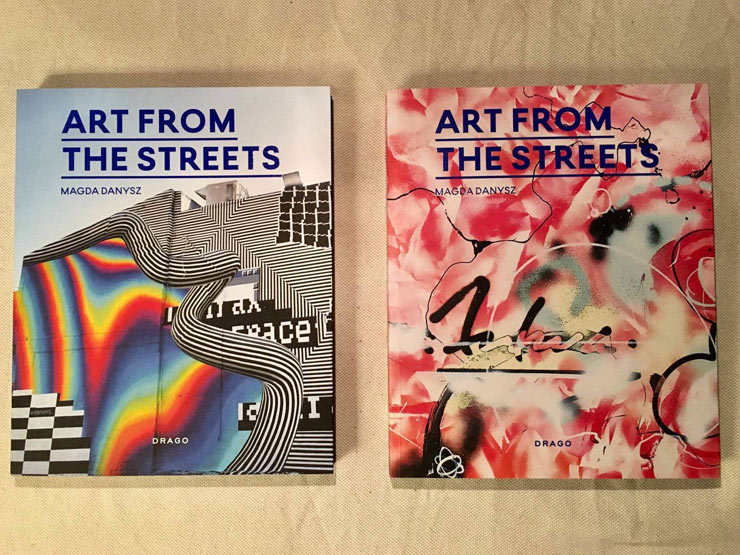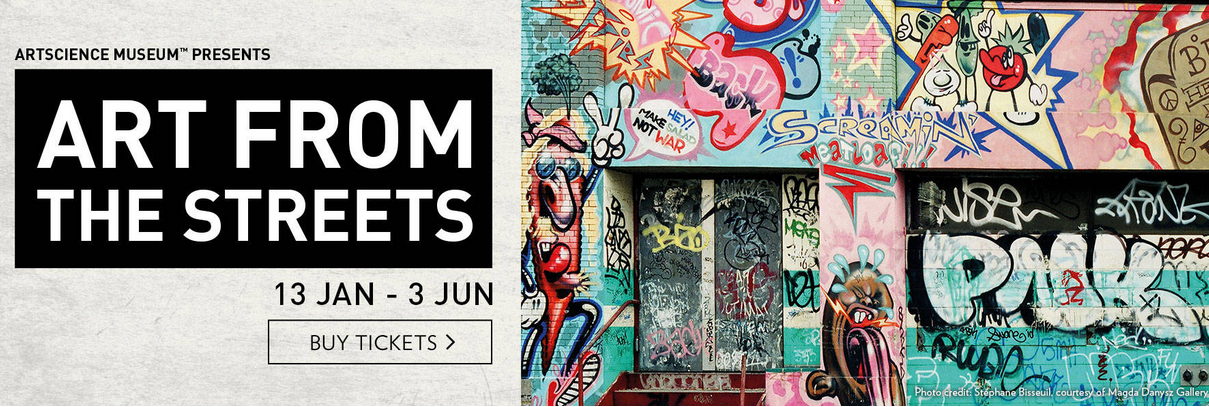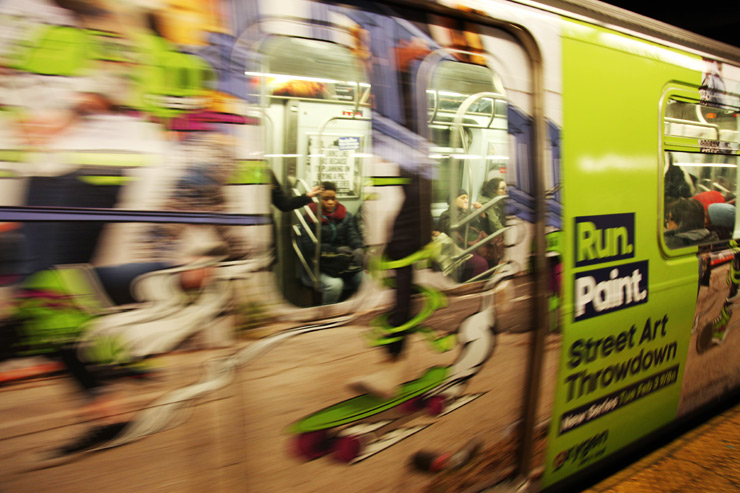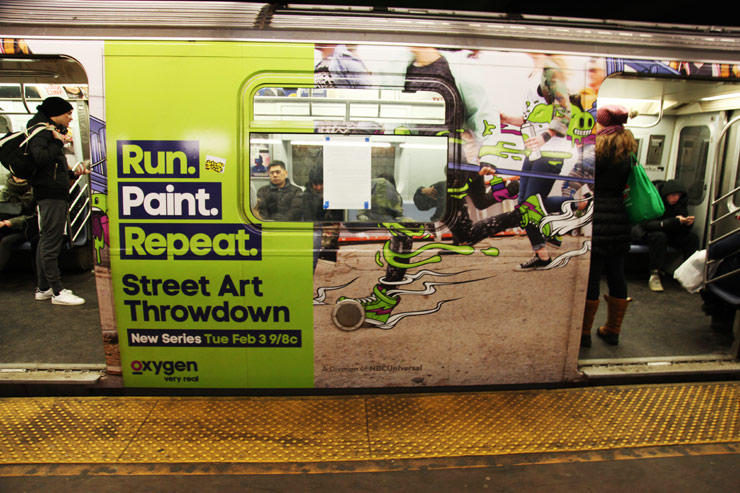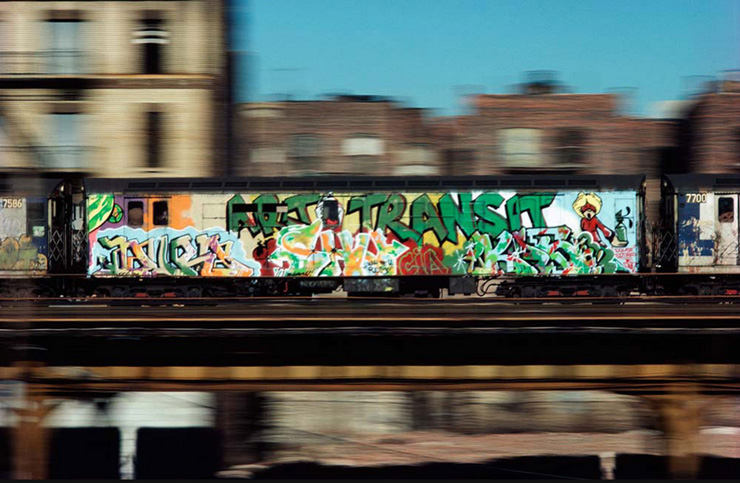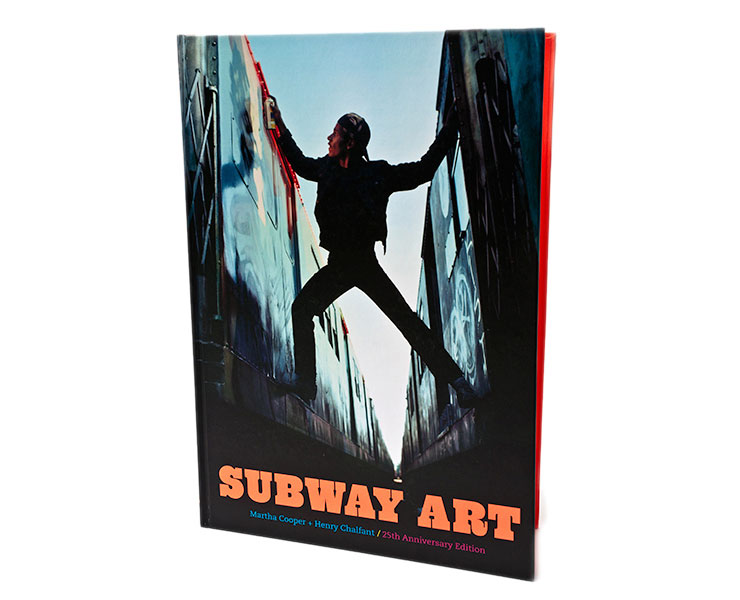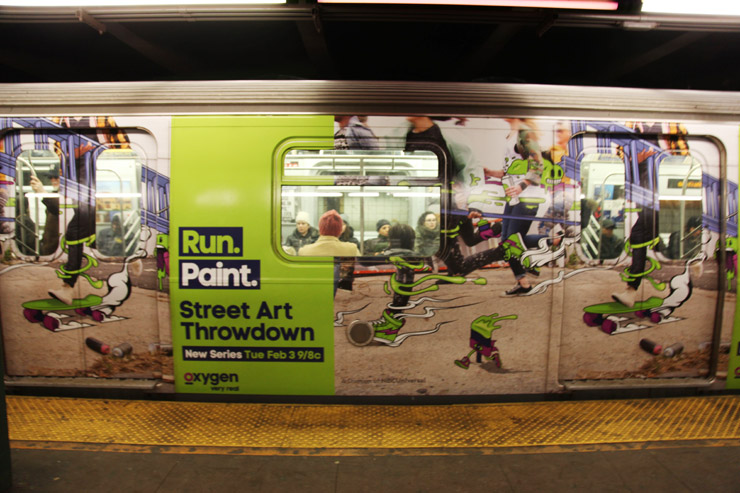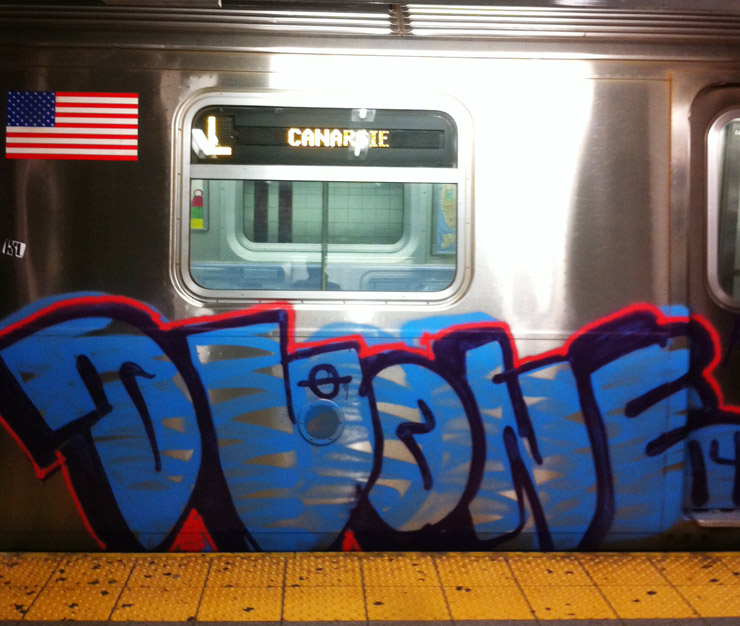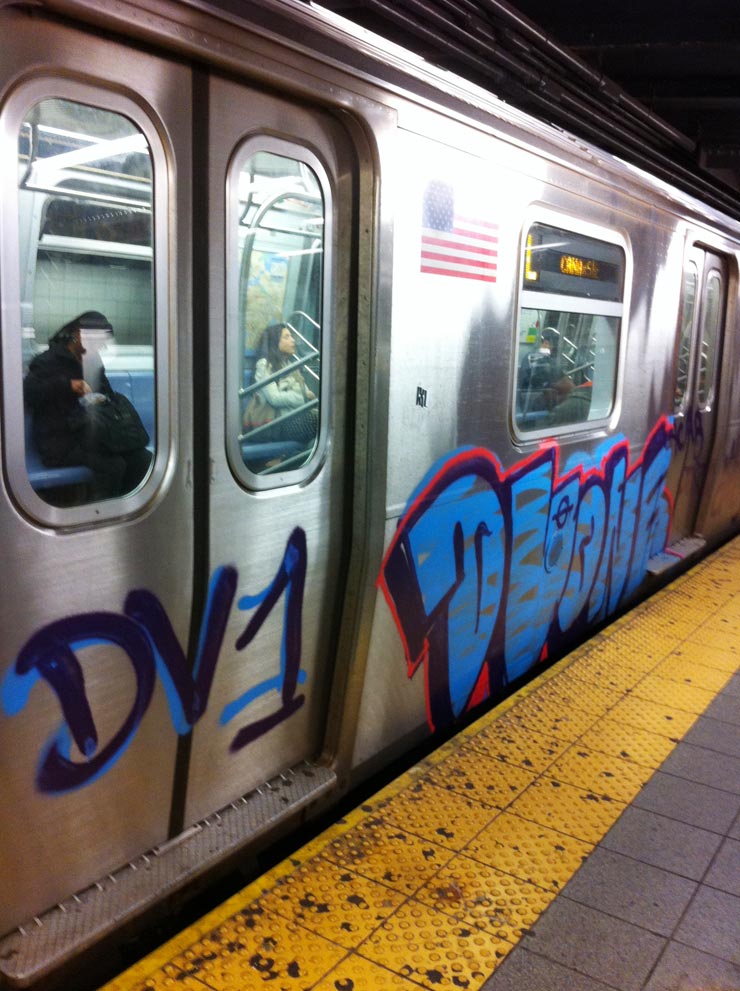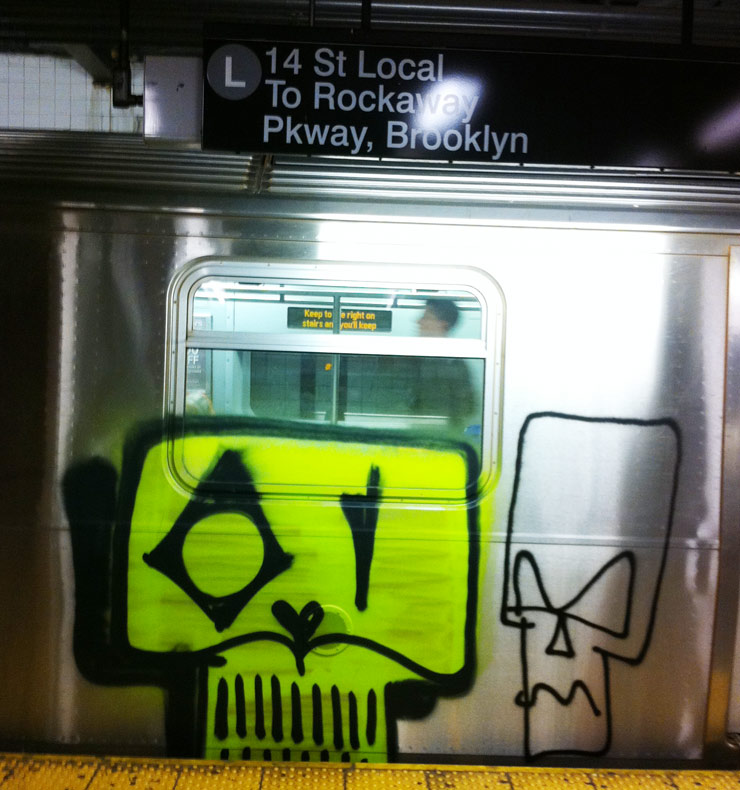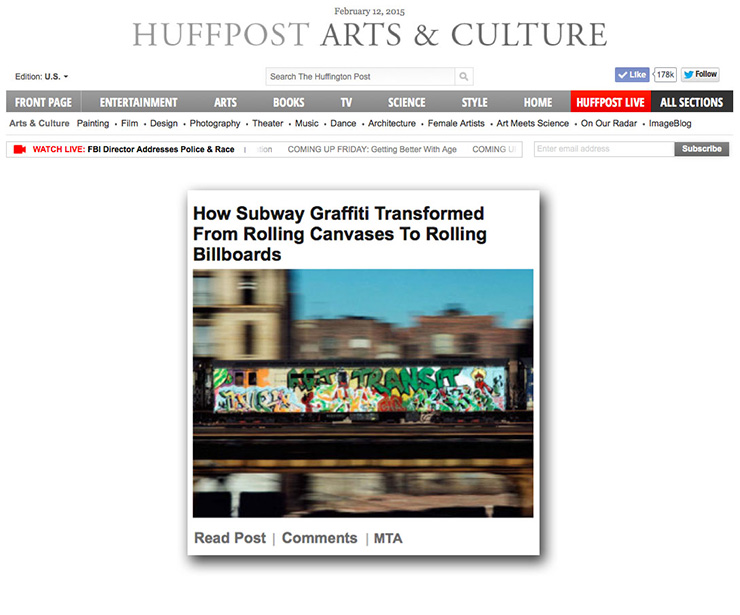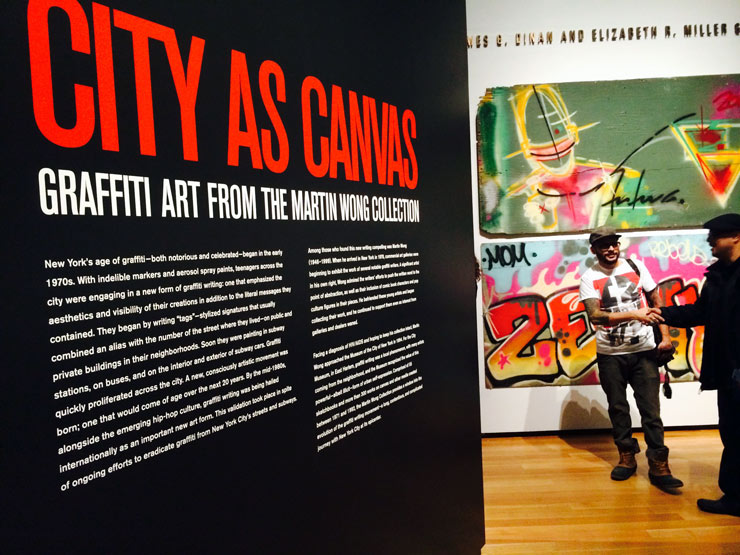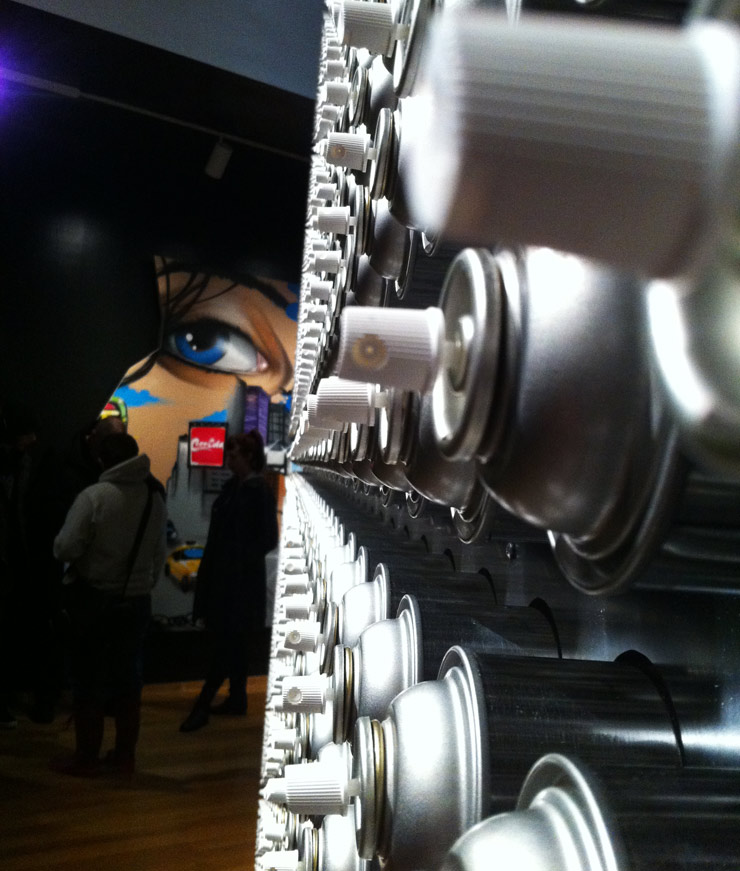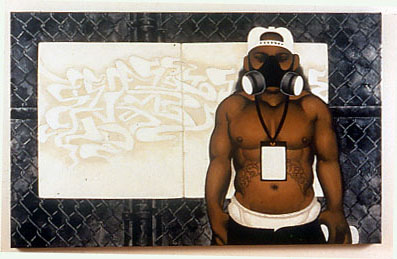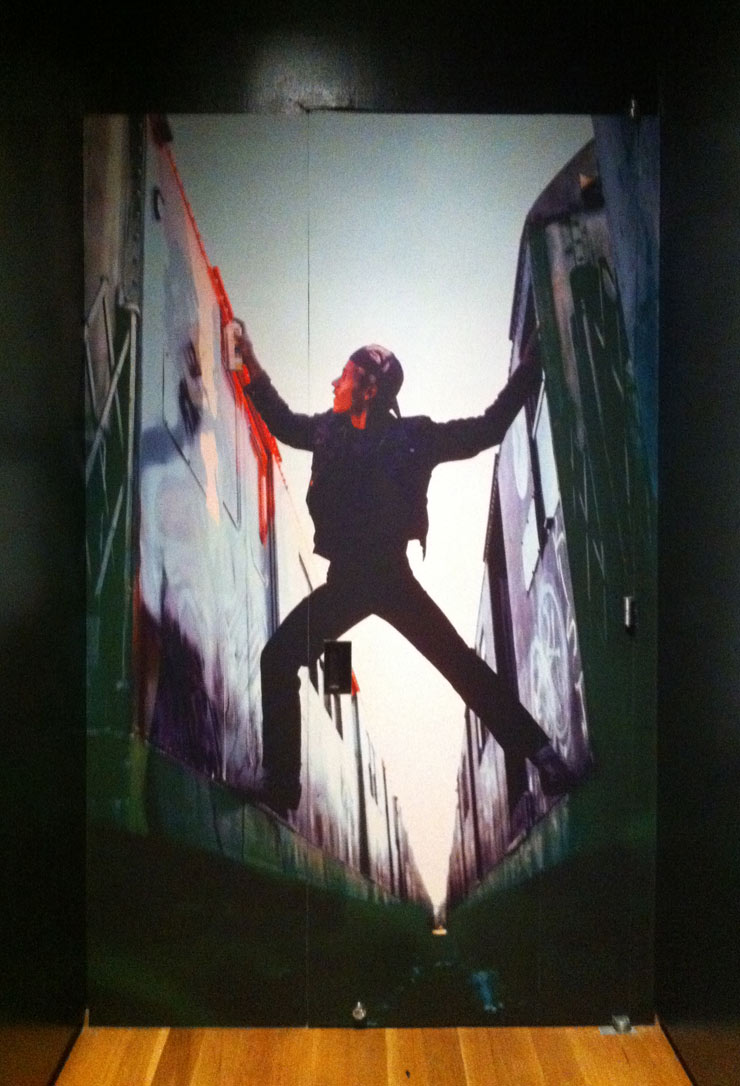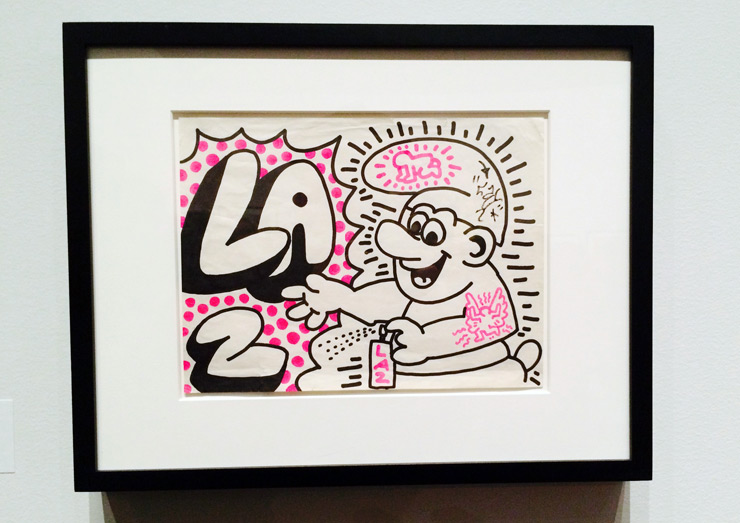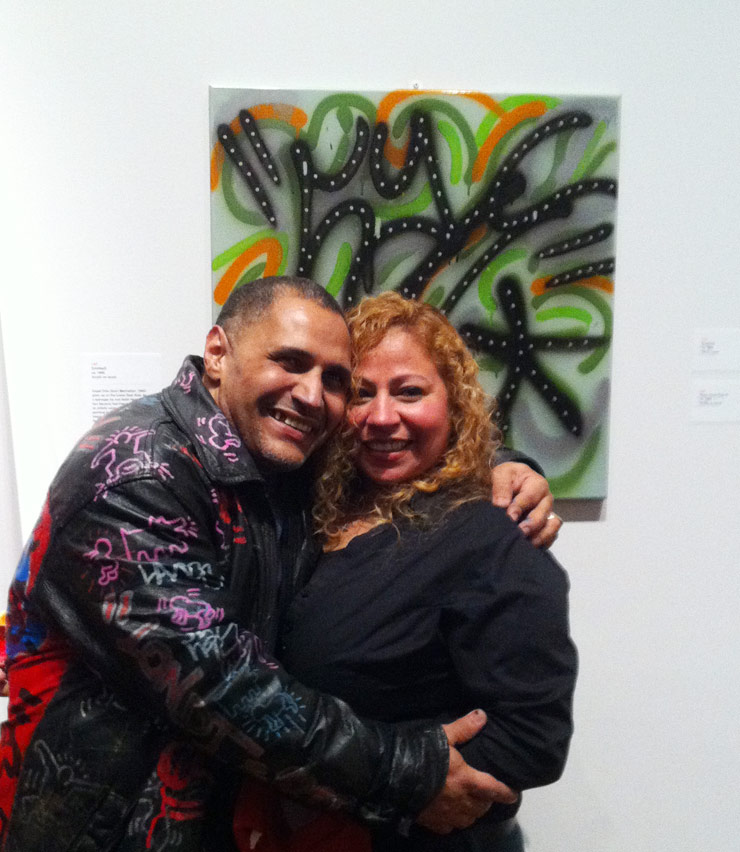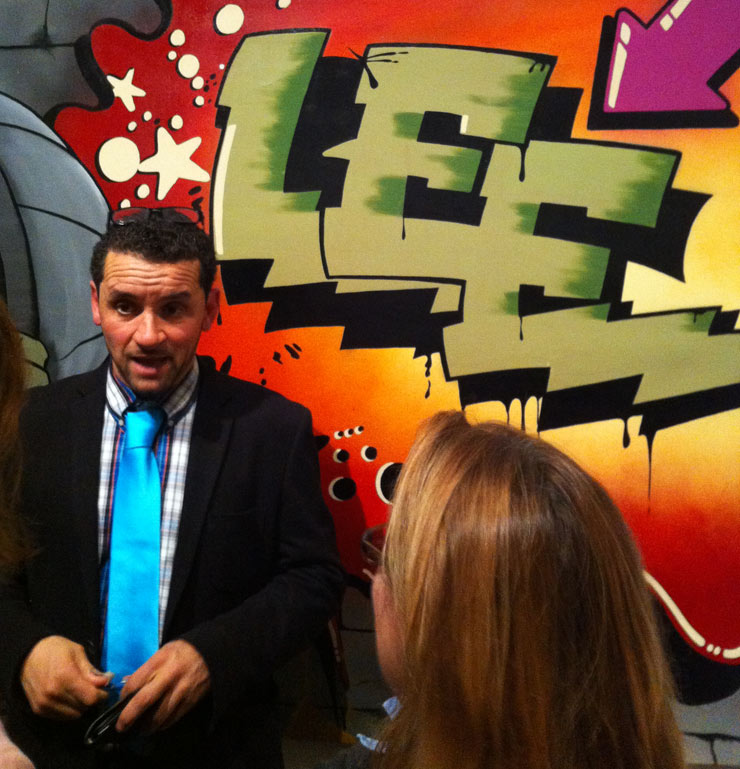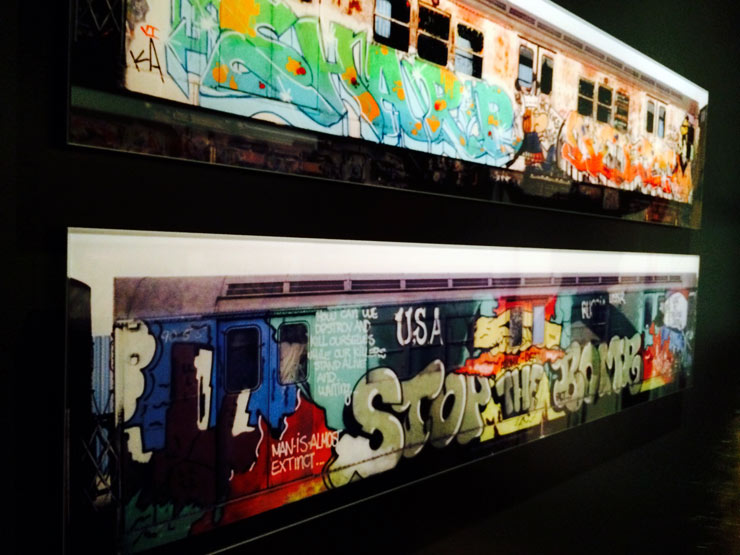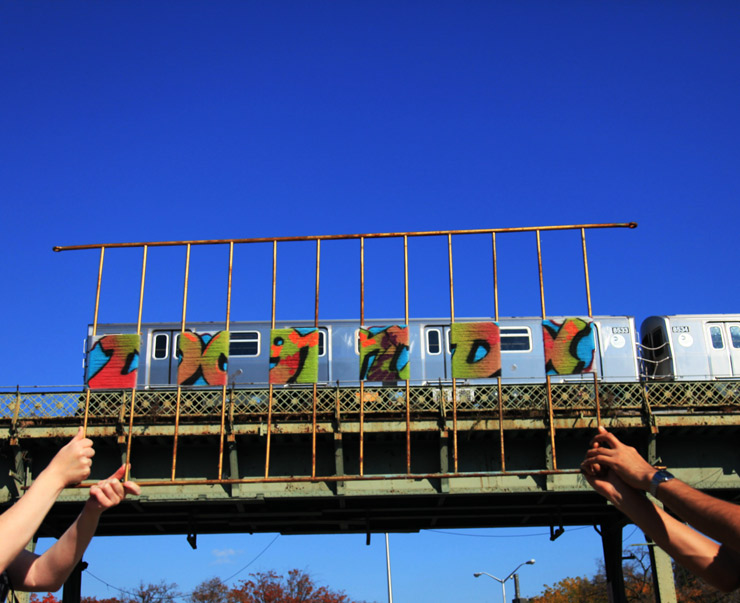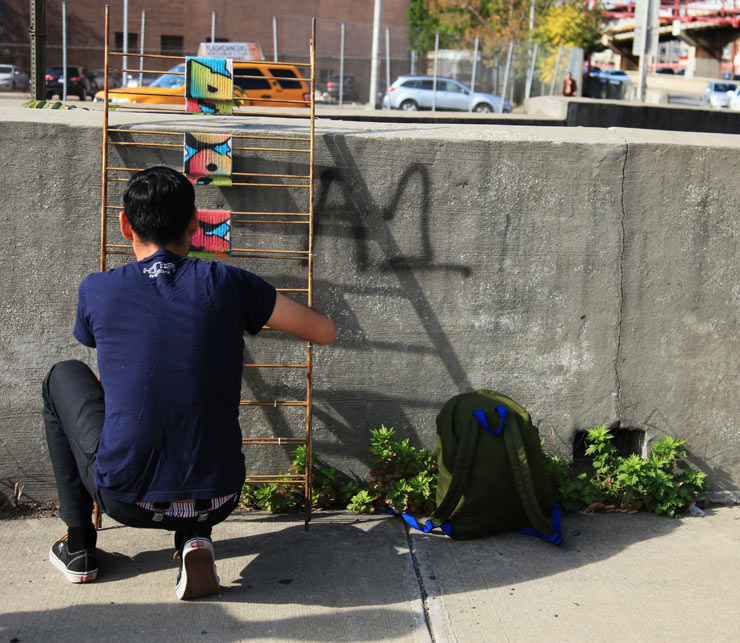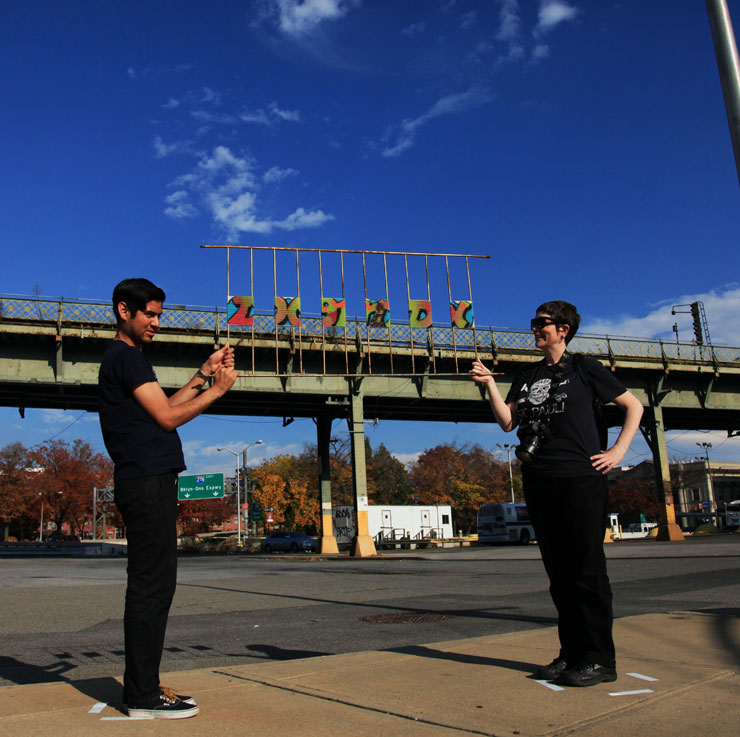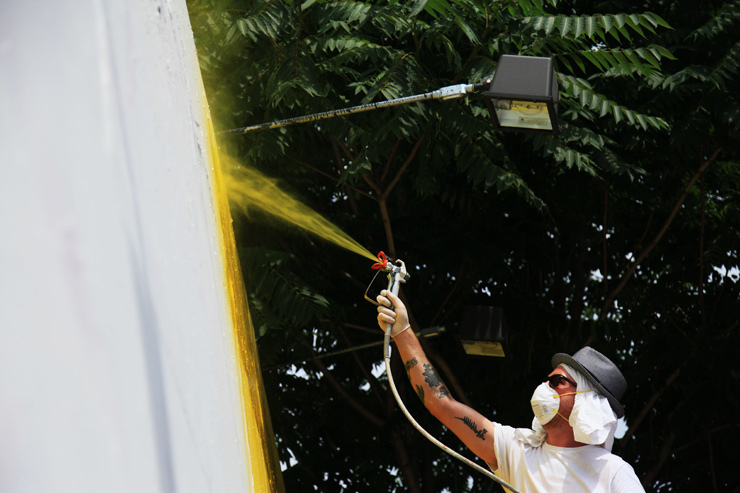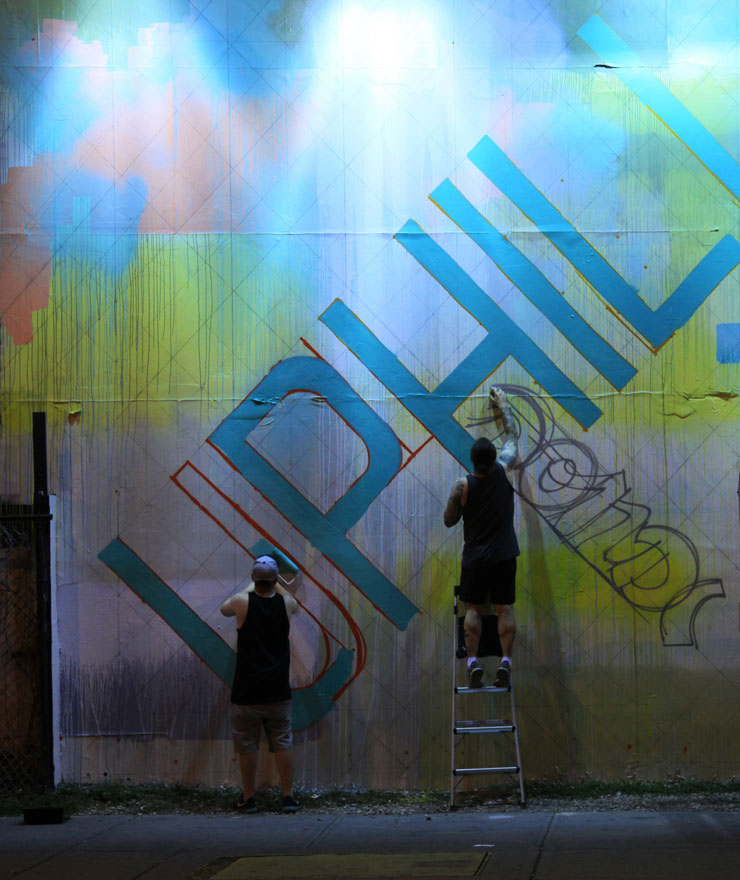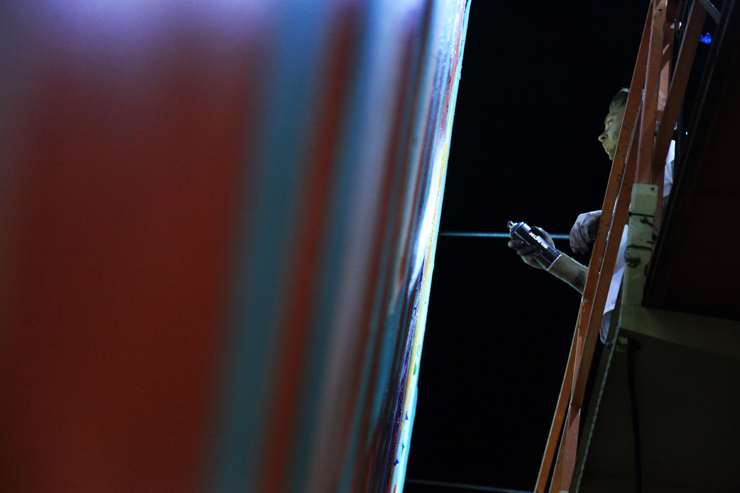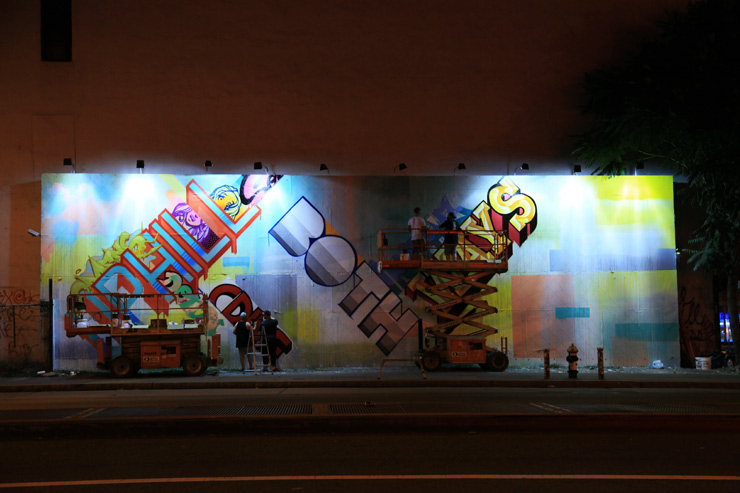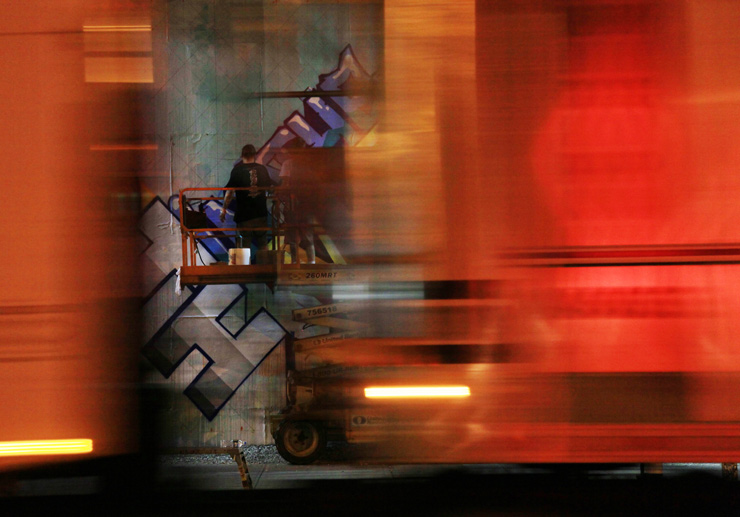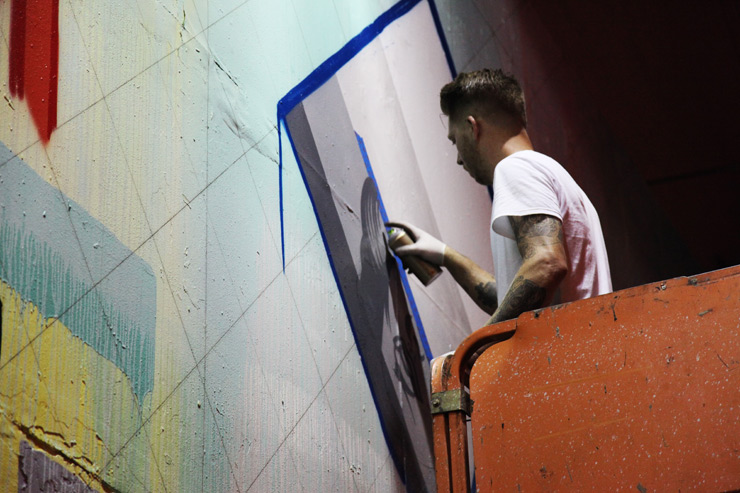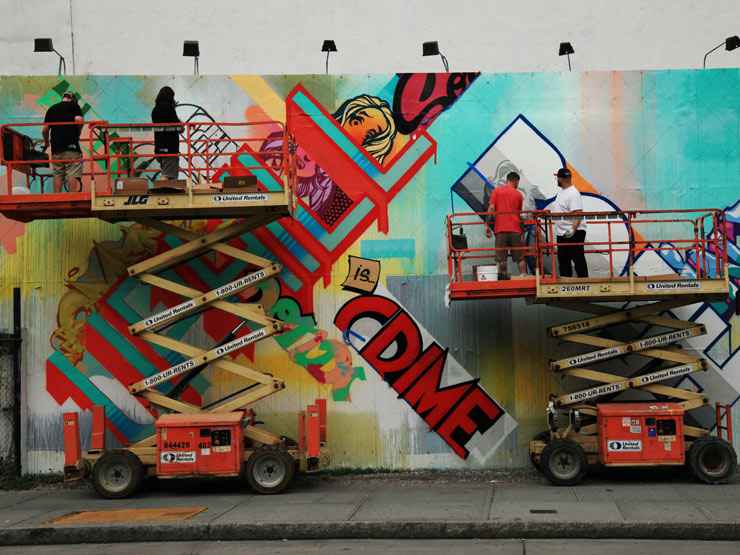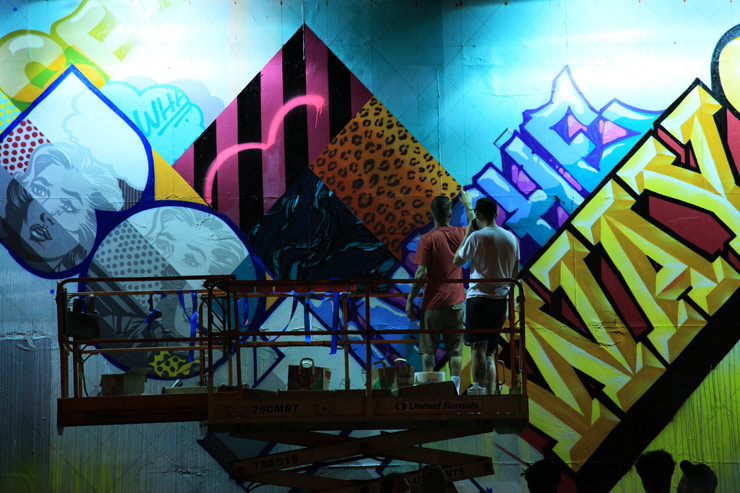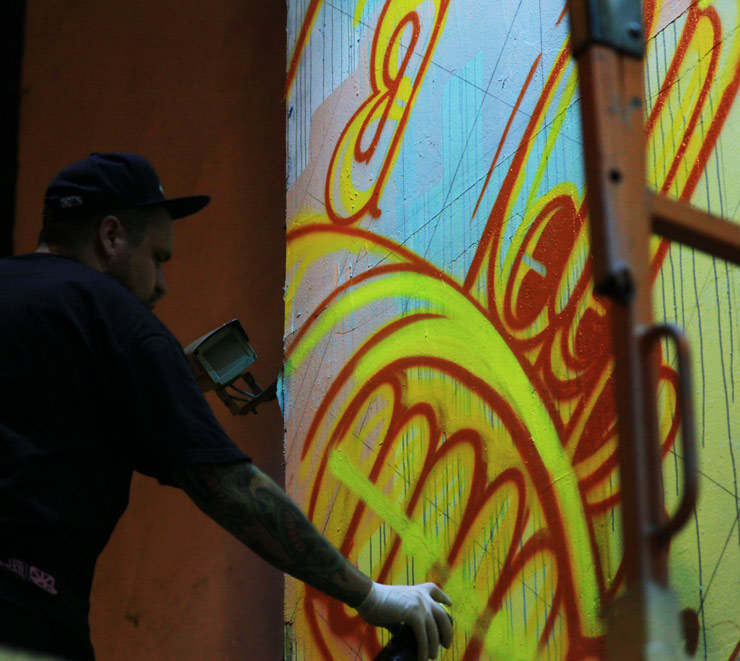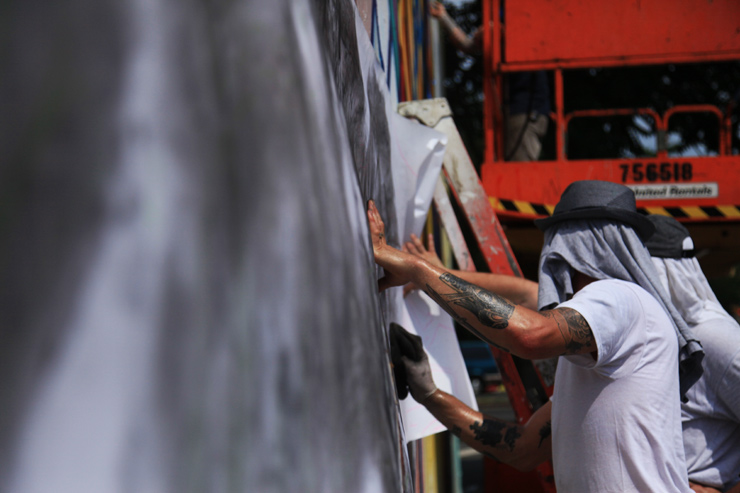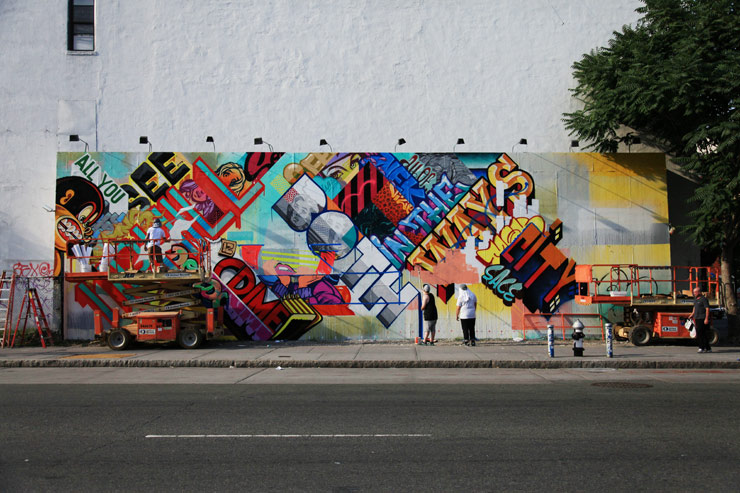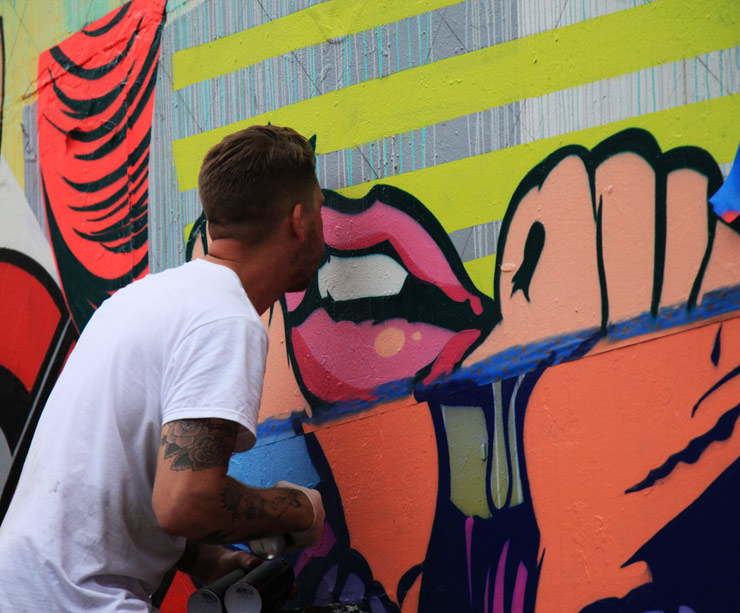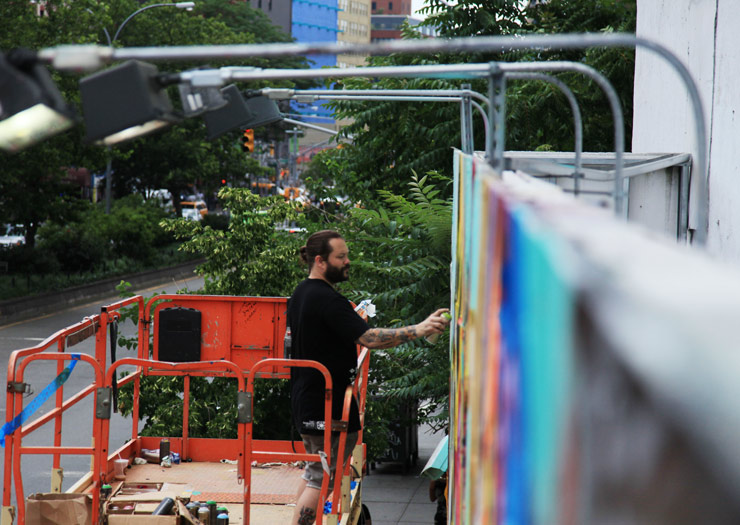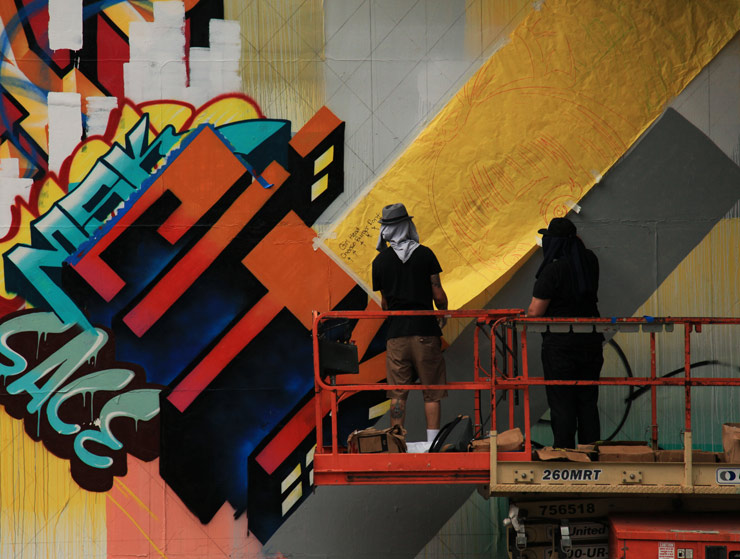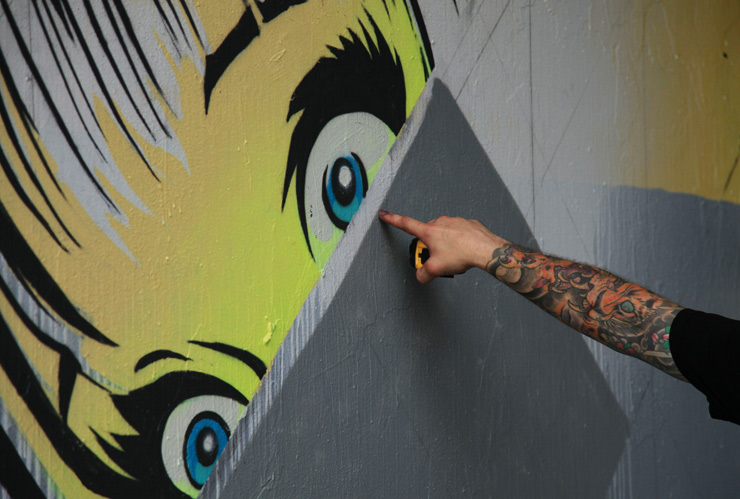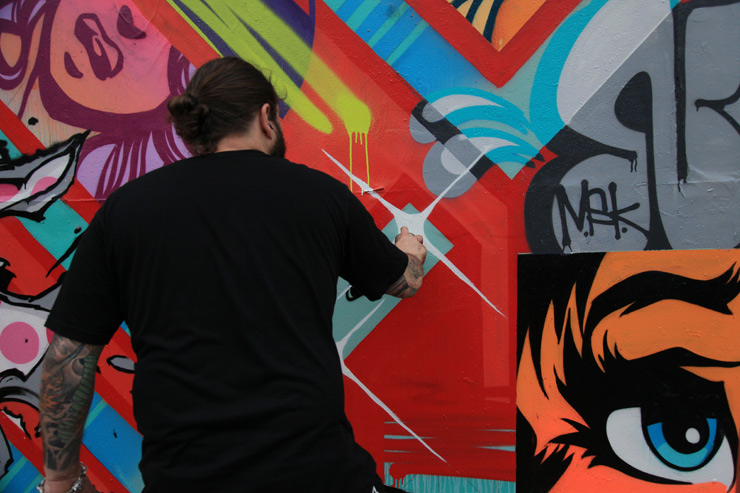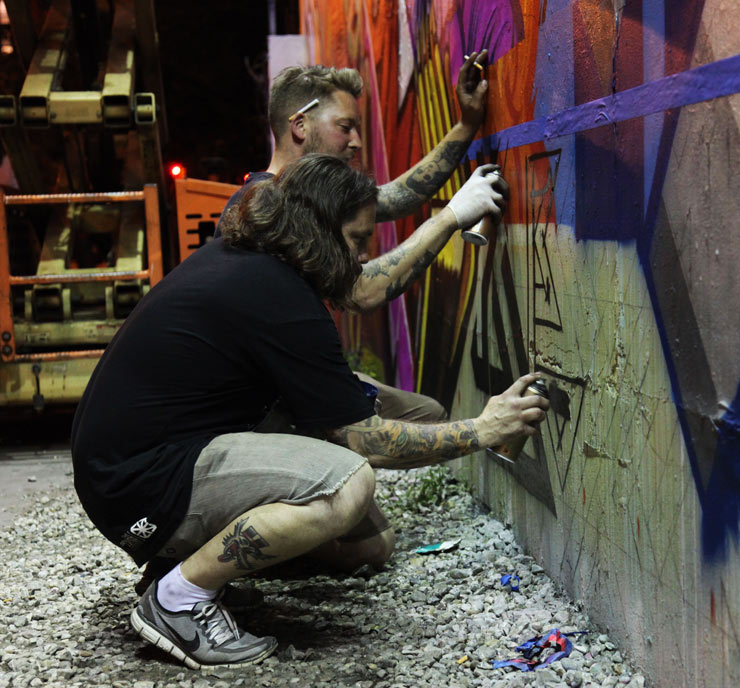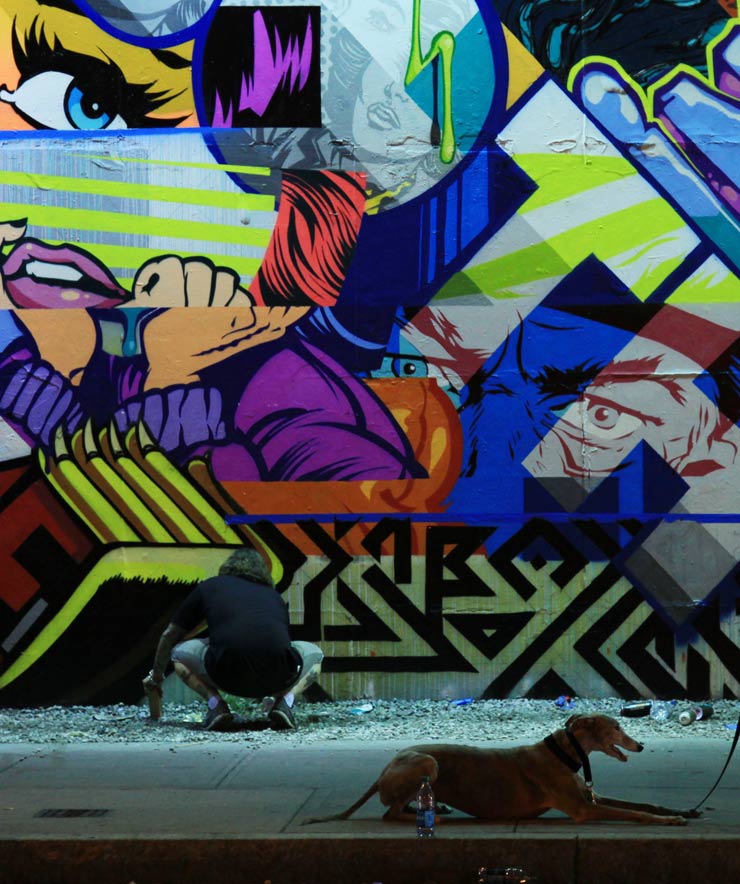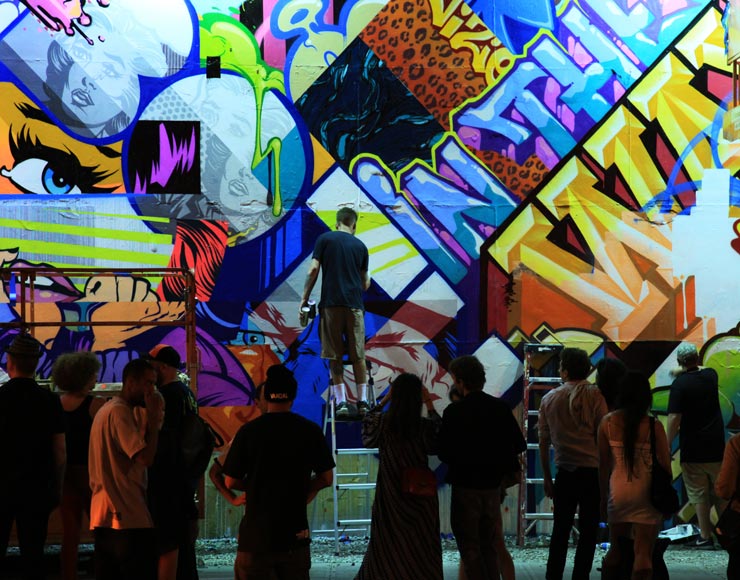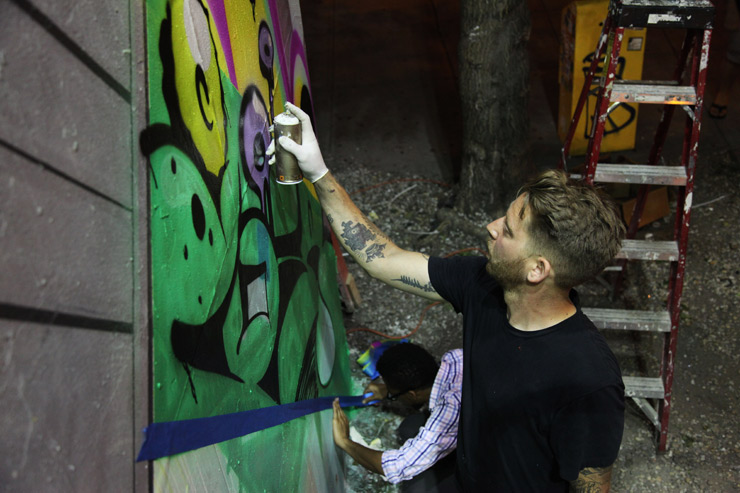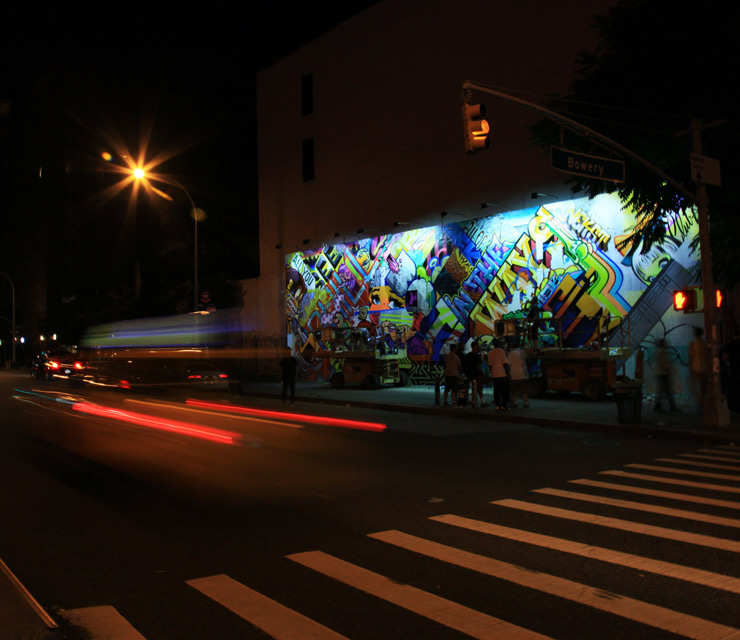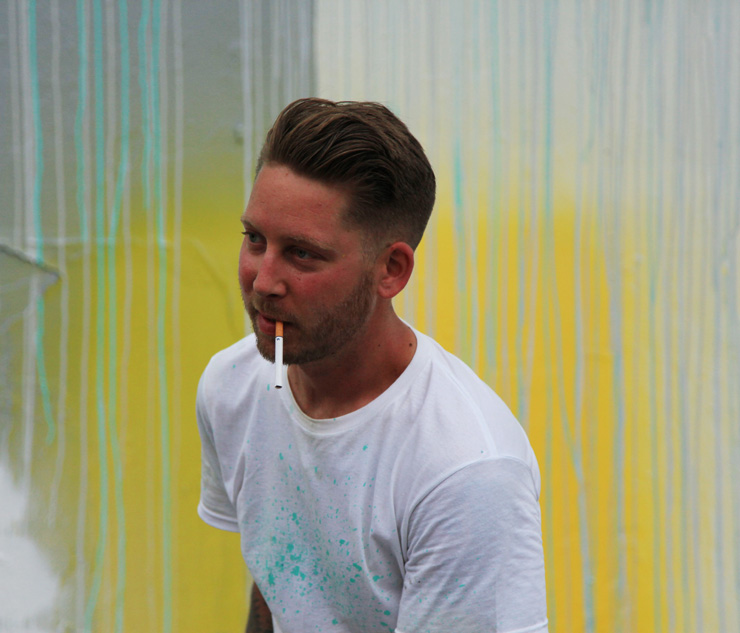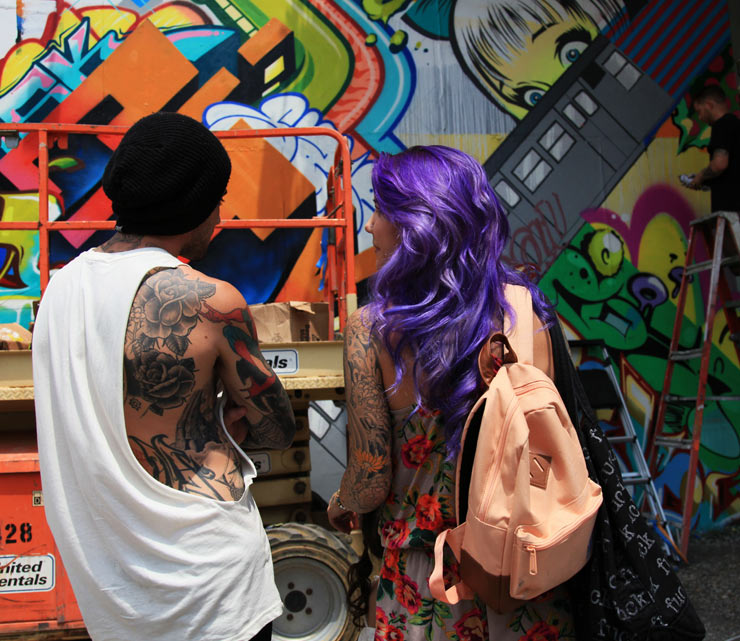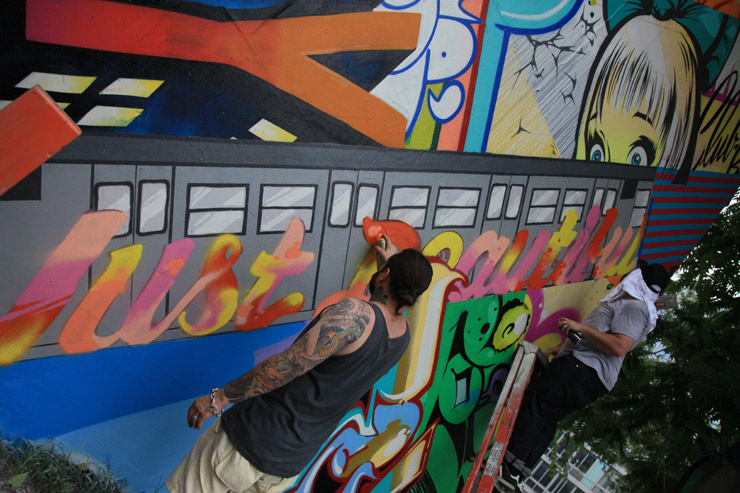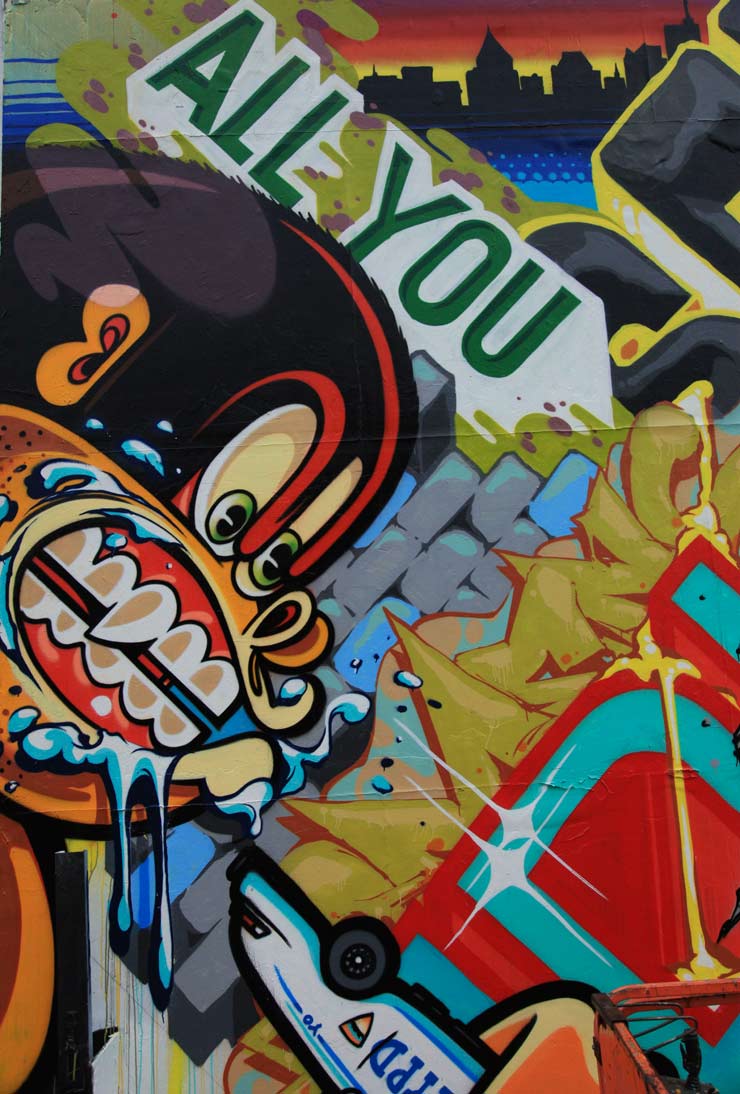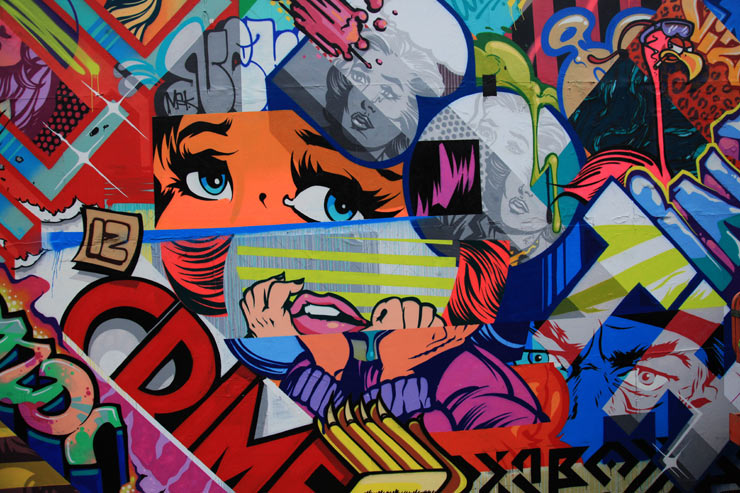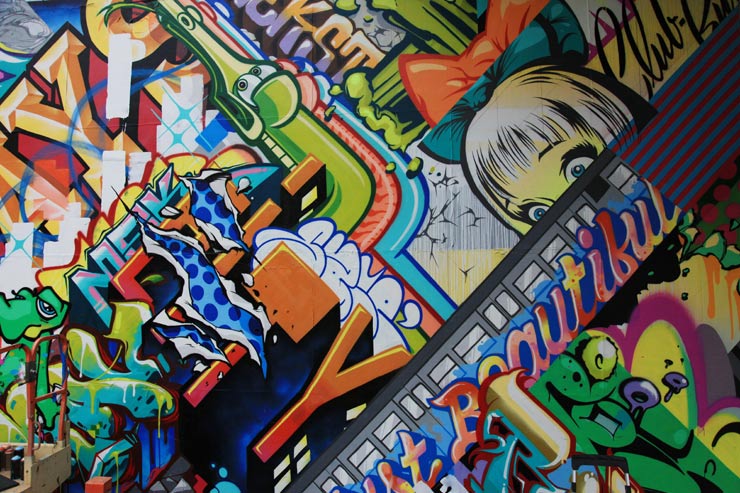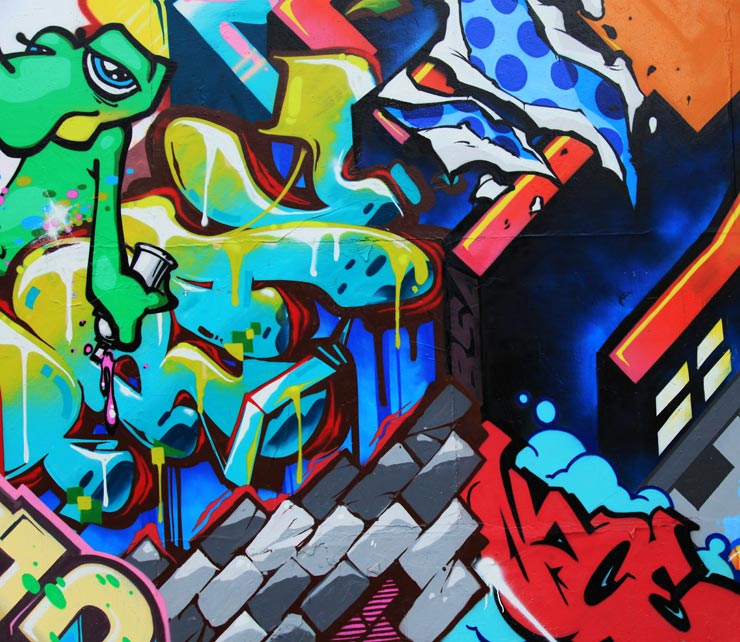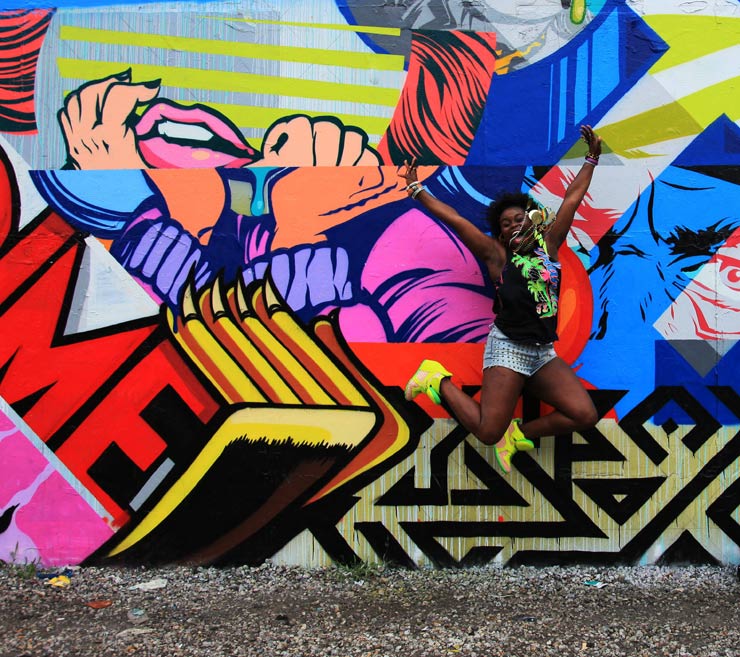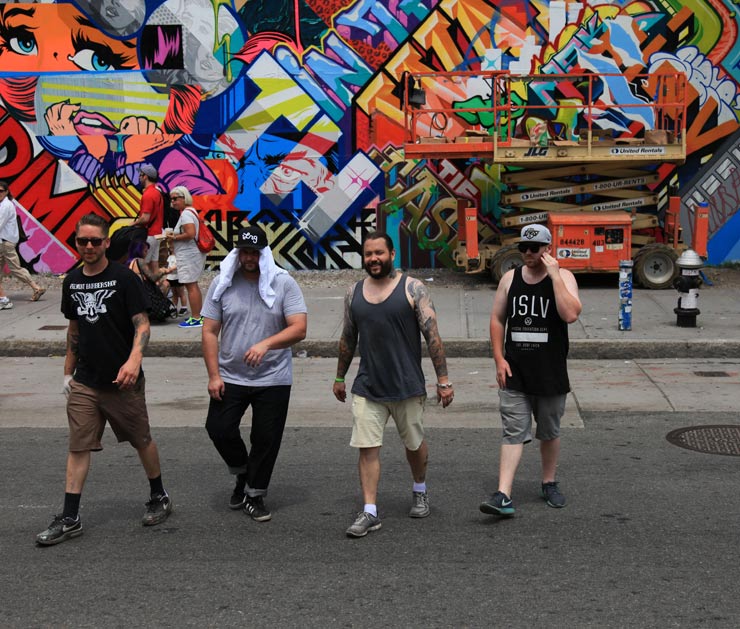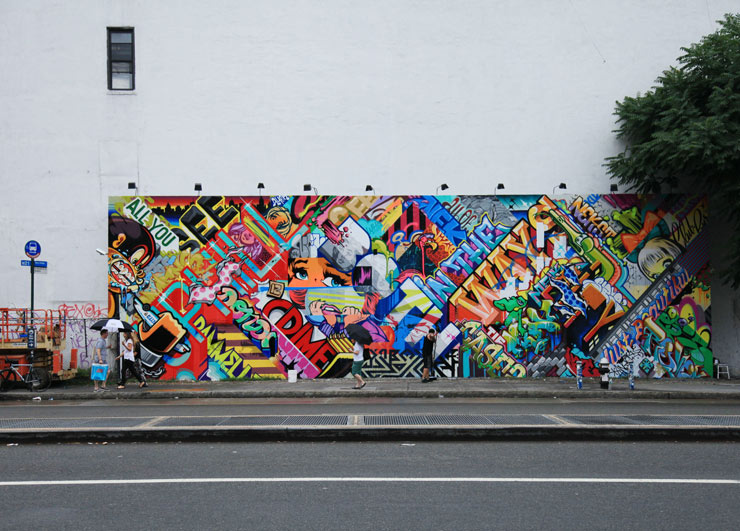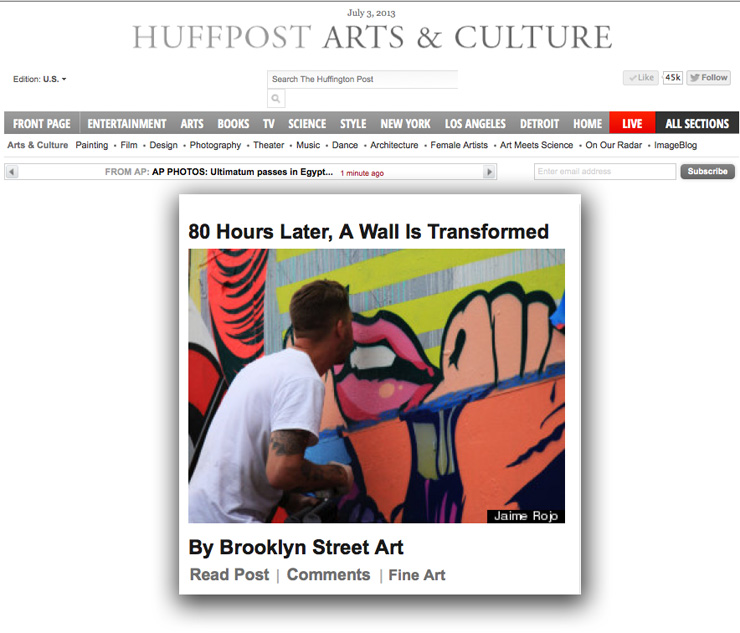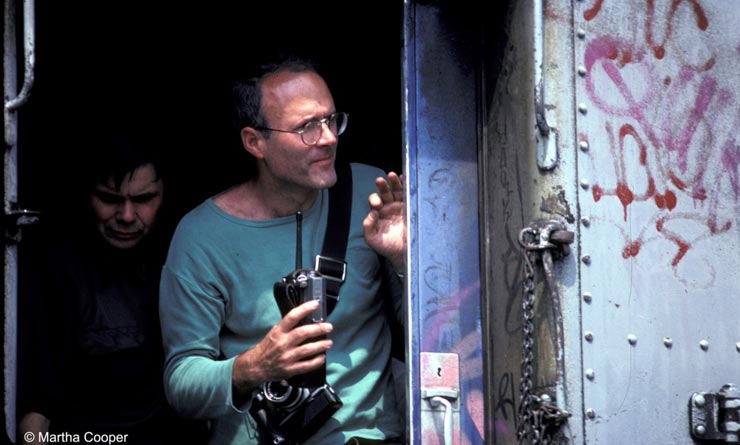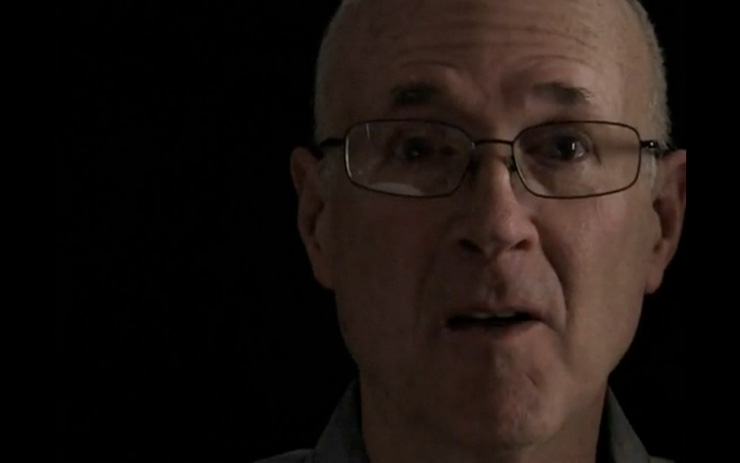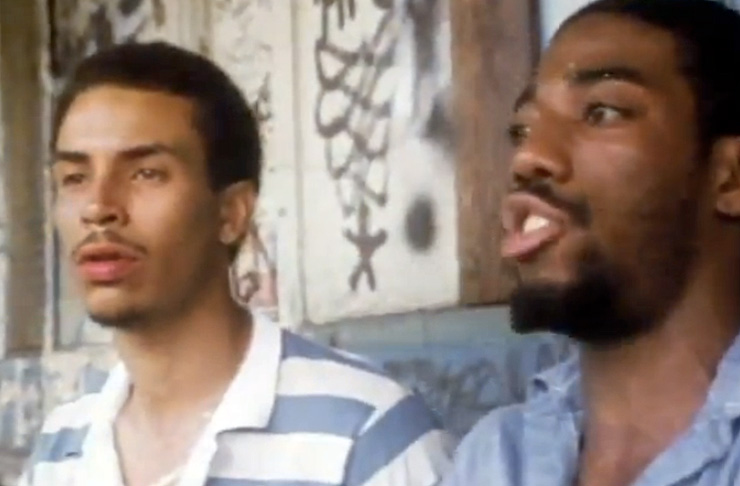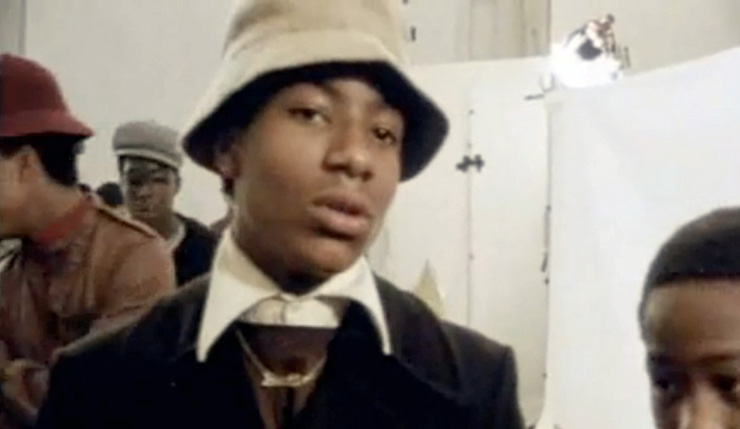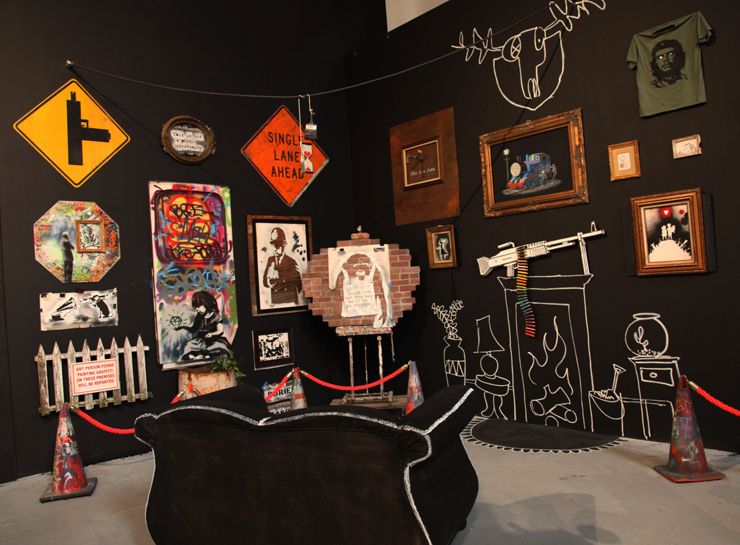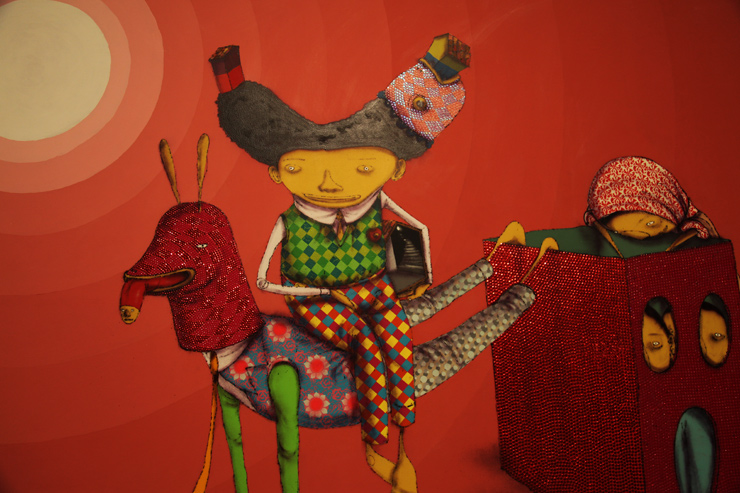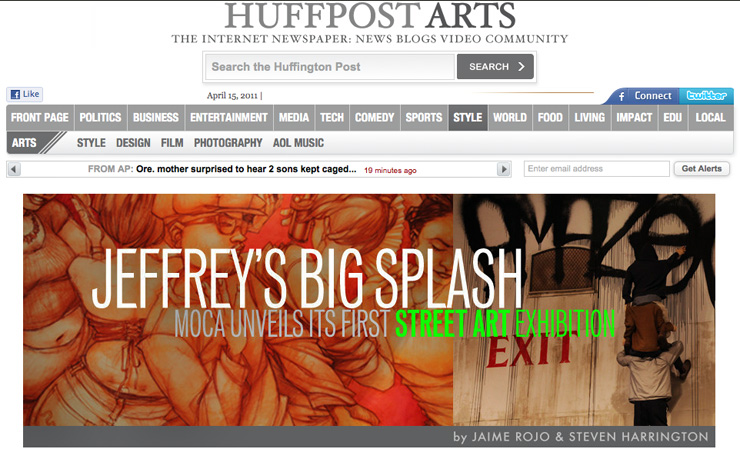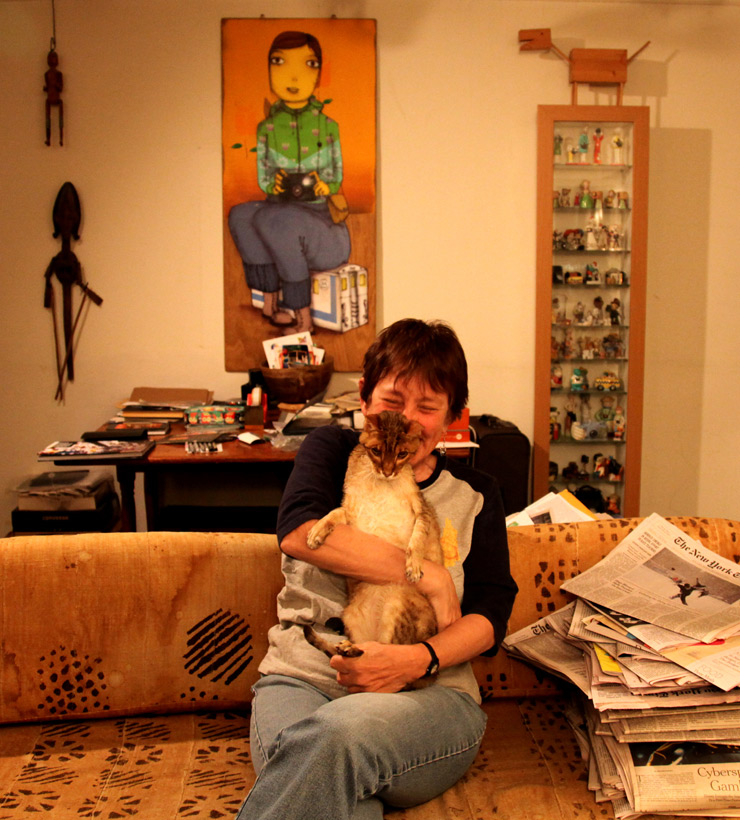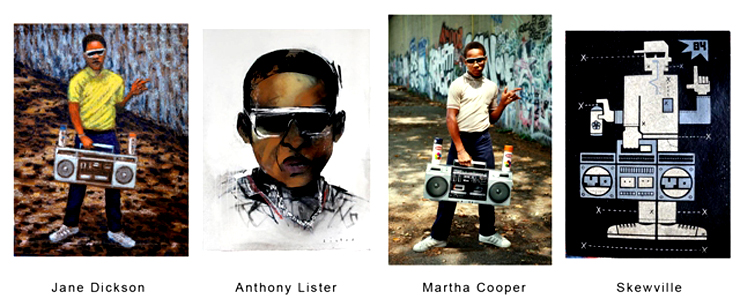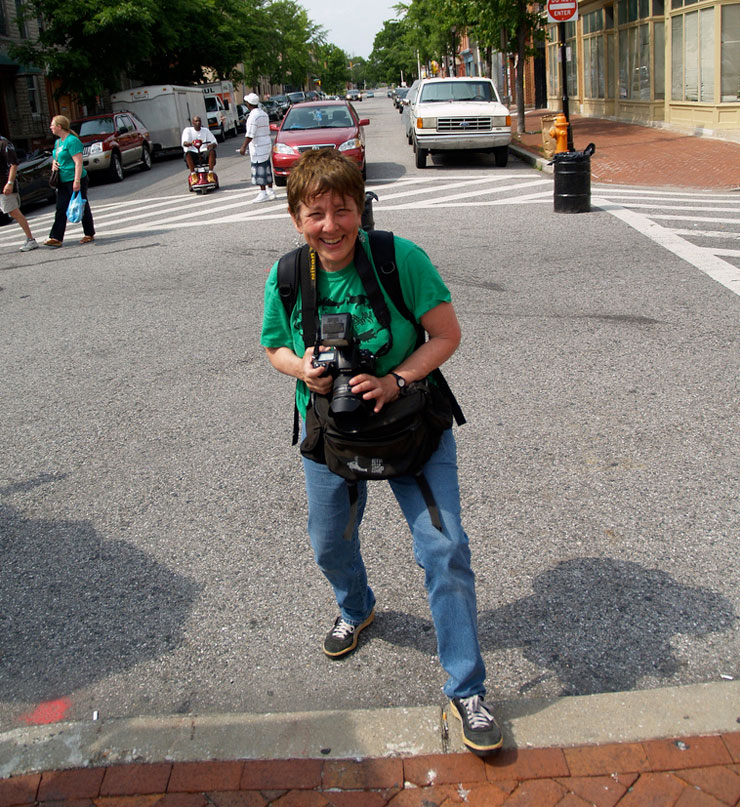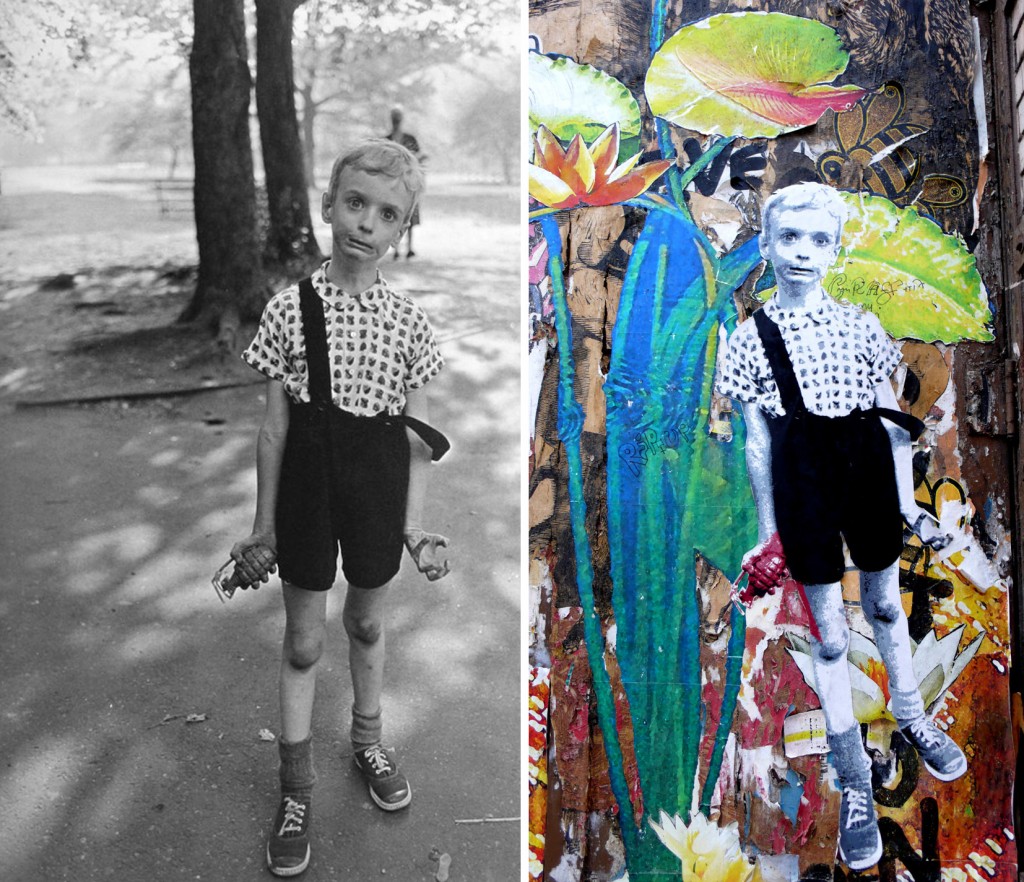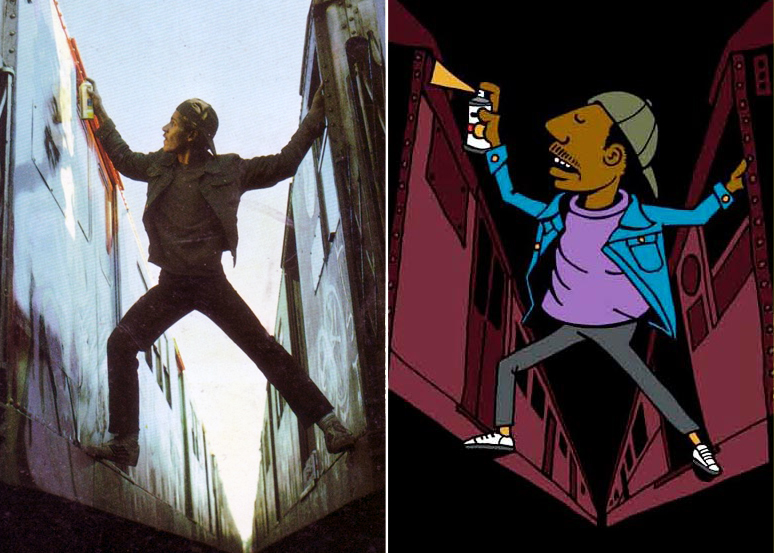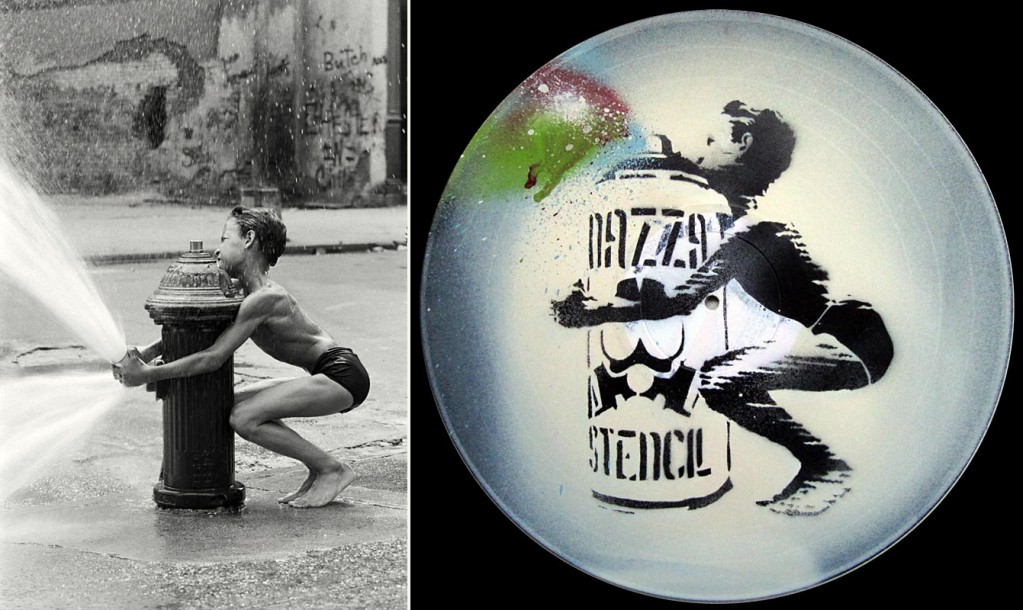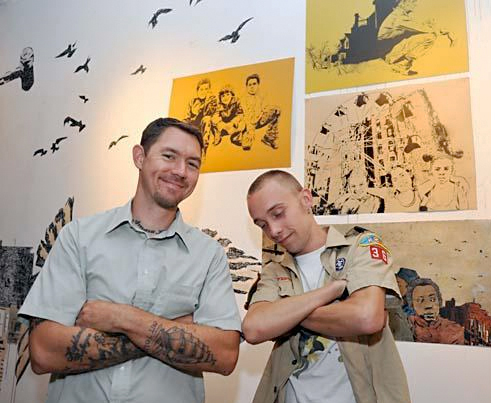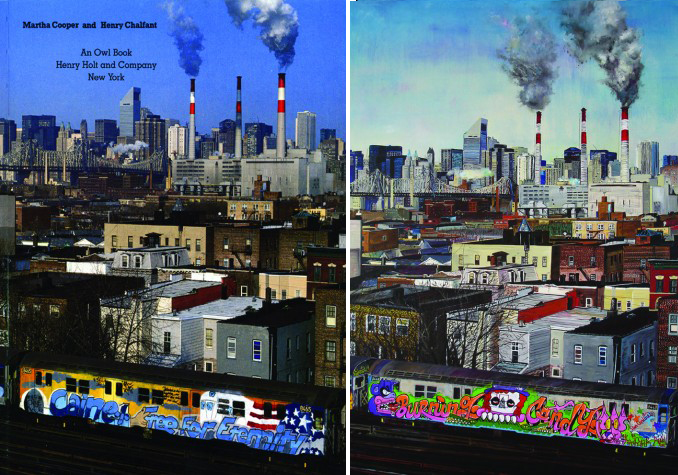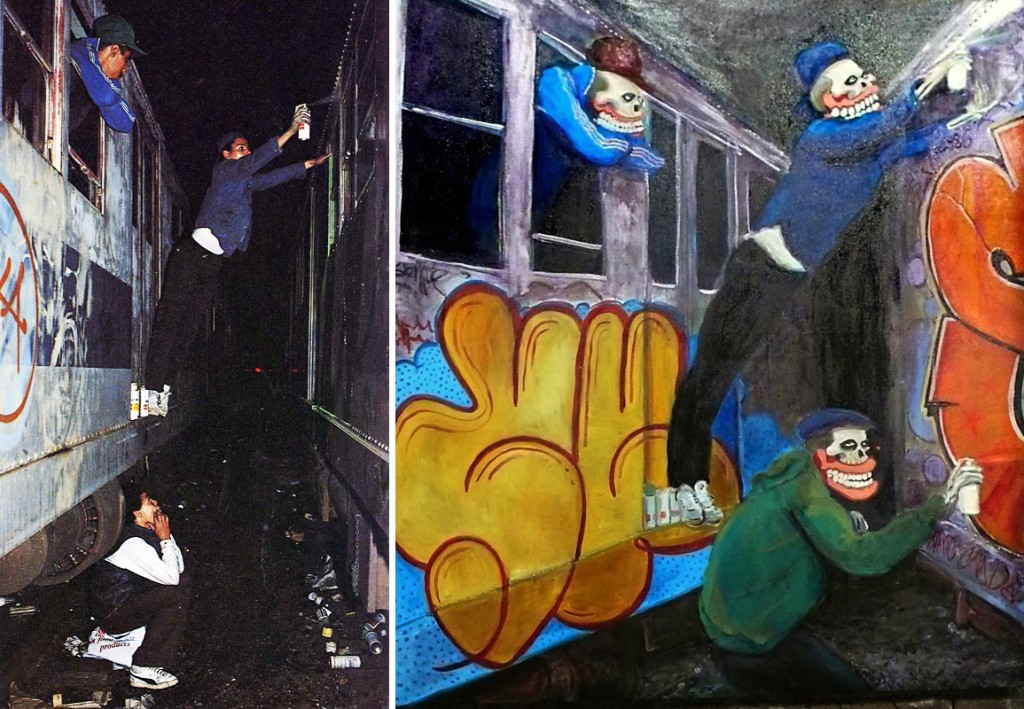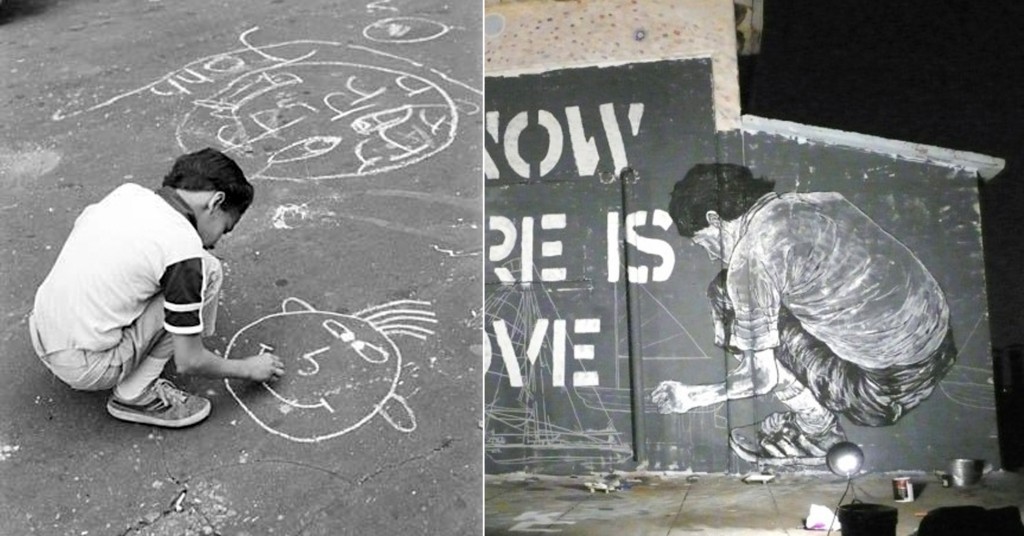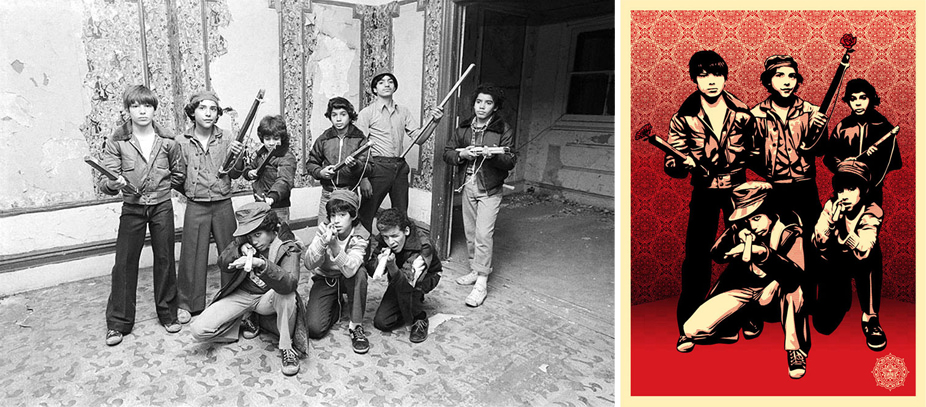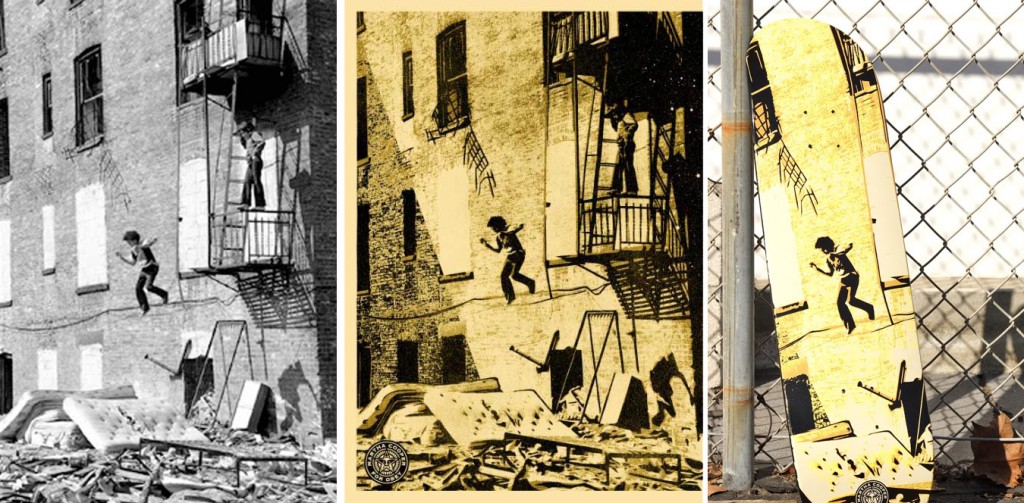It may be a challenge to identify the through-line when it comes to curation of artworks at an auction house exhibition. Selections are predicated on the availability of artworks at the moment and the exigencies of the market. And 30 additional variables.
You will however see a warm confirmation of greater themes in the new exhibition at Phillips auction house that opened last week entitled 1970s / Graffiti / Today, and you’ll leave enriched by the experience. With the works of 30 or so artists on display for approximately a month, it is not intended to be a comprehensive survey, yet it manages to spread a wide net over a number of scenes, practices, and personalities working on US streets during the previous five decades.
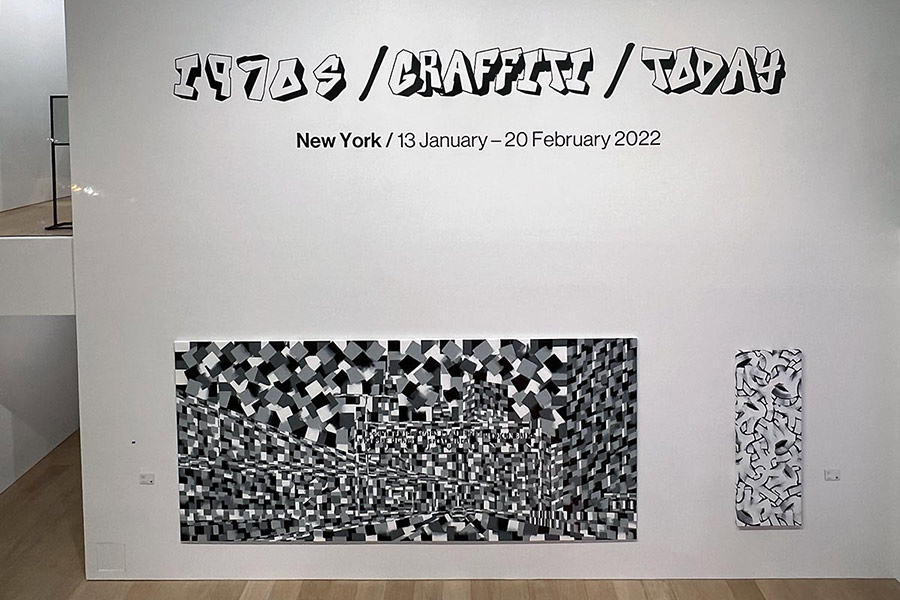
There is a vastness to this scene, its people, its practices, its histories, its quality variations. As evidenced by a show like this, there is now a general acceptance of the street-born form of visual expression called graffiti, its various hybrids expressed broadly as street art, and the onward march of certain forms of both toward acceptance as contemporary art. As suggested by the title, you’ll probably see a good representation of each here, and one or two will strike you as quite impressive.
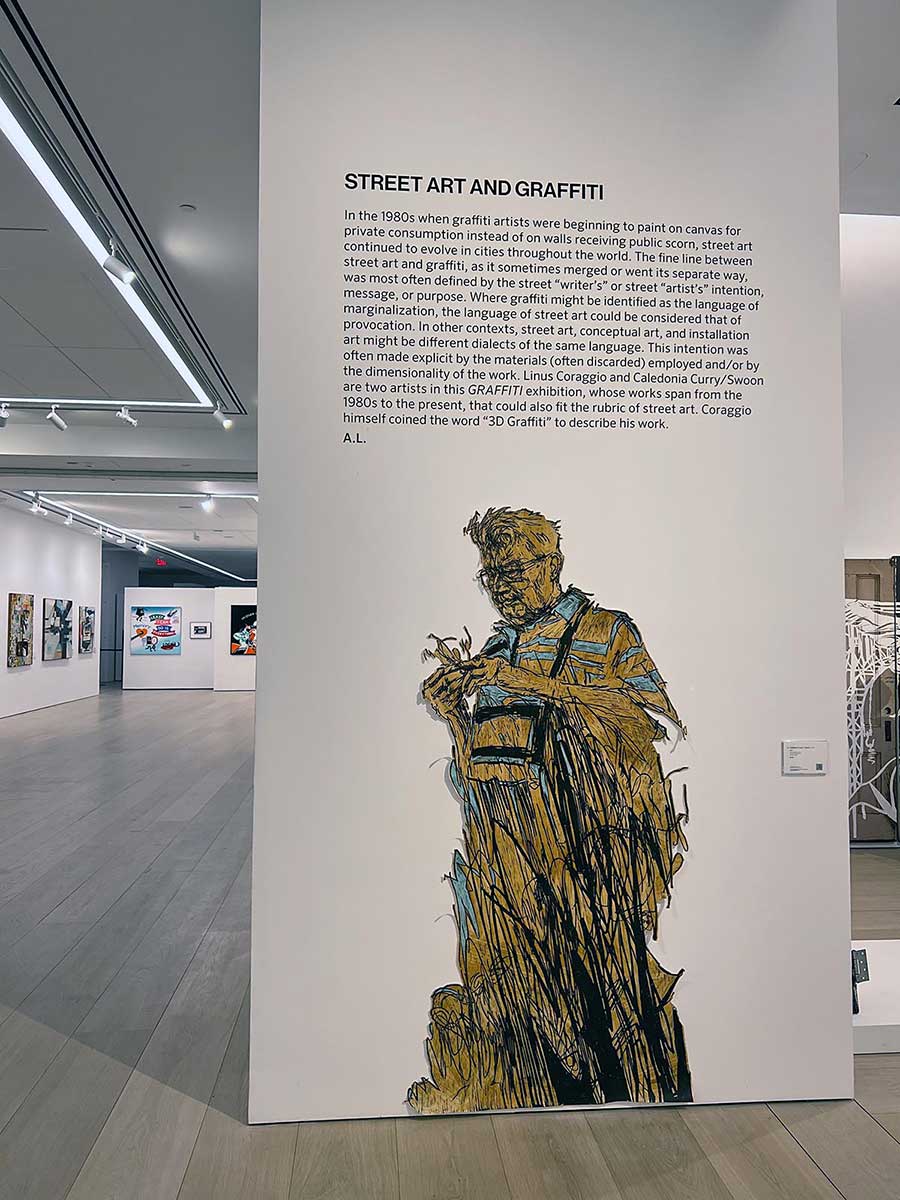
Curator Arnold Lehman is a recognized champion of that march forward, most notably for when he shepherded the “Graffiti” exhibition as Director of the Brooklyn Museum in 2006. That show, one of the first museum shows dedicated to the movement, featured 20 large-scale canvasses by graffiti artists that were donated by the estate of famous mid-century New York gallerist Sidney Janis, who had shown a number of them in the early 1980s.
A native New Yorker, Lehman grew up with graffiti on the trains and easily recognized the contributions it was making to his city and the culture. When he had an opportunity to introduce the works as an exhibition, he says he faced much opposition, despite the fact that it came from the collection of a gallery owner who was celebrated for introducing most of the emerging leaders of abstract expressionism, the Fauves, the Futurists – and later the proponents of Pop.
“He began showing graffiti in his gallery in 1981 or 1982,” Lehman says of Janis when speaking of the canvasses he organized in the Graffiti show at the Brooklyn Museum. “A number of my colleagues were quick to write and say, ‘Have you lost your mind?’ “
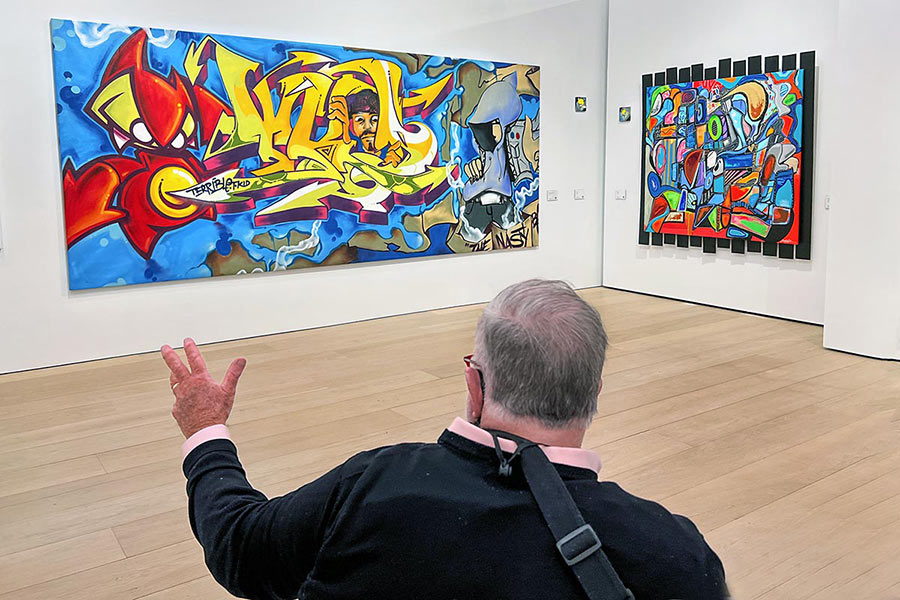
Five of those same canvasses provide an anchor in the timeline here, supported with early photos and light ephemeral documentation of the burgeoning graffiti scene on subway trains and elsewhere in New York. This city and its streets and culture figure prominently into this collection of about 150 pieces, with Mr. Lehman estimating for us during a recent tour that the mostly US-focused show is divided into two-thirds New York and one-third Los Angeles.
“The artists we are showing really deserve a presentation like this,” he says as we walk through an exhibition of individual expressions that are as varied as the kind of people who’ll typically ride a subway car; drawings from sketchbooks (Al Diaz), stenciled canvas (Chaz Bjorquez), photographs (Martha Cooper, Gusmano Cesariti, Steve Grody, Cheryl Dunn), elaborate “wood paintings” on welded steel sculpture (Faile), canvasses by early generation graffiti pioneers (Fab 5 Freddy, NOC, Daze, Lady Pink, Toxic, Haze), repurposed metal subway signs (Julius “T. Kid” Cavero), a slickly painted motorcycle (Crash), mixed media collage (Augustine Kofie) a refurbished ice cream truck (Mr. Cartoon), a repurposed bus stop poster (KAWS), an acrylic painting on scrap metal (Margaret Kilgallen), a mounted neon sculpture (Risk), paper cutouts pasted on found wooden doors (Swoon) and a heavily tagged Fun Gallery refrigerator hit up in the early 1980s by people like Basquiat, Haring, and Futura.
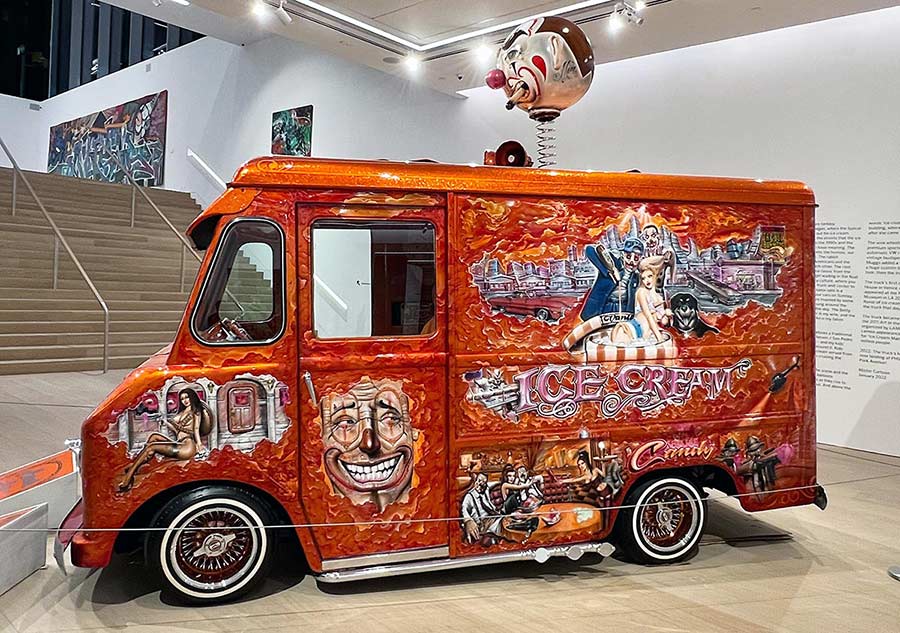
The newly completed Phillips gallery is ironically and literally underground. Its thousands of square feet lie just below the Park Avenue street level, lending a hidden secretive quality to it. Nevertheless, the massive venue sports triple-height ceilings and a vast marble spaciousness that allows for mounting and lighting a variety of gallery sizes, shapes, and volumes. It’s also free.
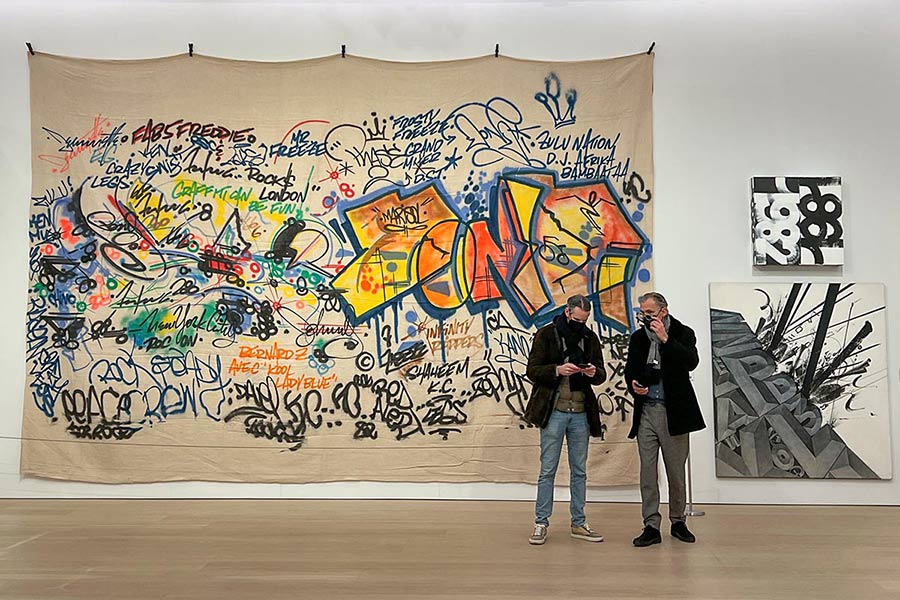
One piece caught our eye and the eye of our companion, the photographer Martha Cooper, whose photos of 1970s-80s graffiti on subway trains places her squarely at the center of the scene. It’s the large fabric canvas/backdrop that commands one of the walls in the gallery – not only for its dynamism of placed elements and handstyle-vibrance but because of the history of the piece and the cross-section of writers and performers who intersect on it. Attributed to Futura 2000, it also contains work by Dondi and a tag by Phase2, at least. It also pays tribute to the musician and performer Afrika Bambaataa, the Rock Steady Crew, a number of possibly British graffiti writers and crews.
When posted on social media by people like Futura and Ms. Cooper this week, discussion of this piece lit up like a fire – with people surmising different venues where it may have been displayed, arguing about the propriety of selling such an item, conjecturing about who owns it, and spotting it in the background of photographs by Janette Beckman and David Corio.
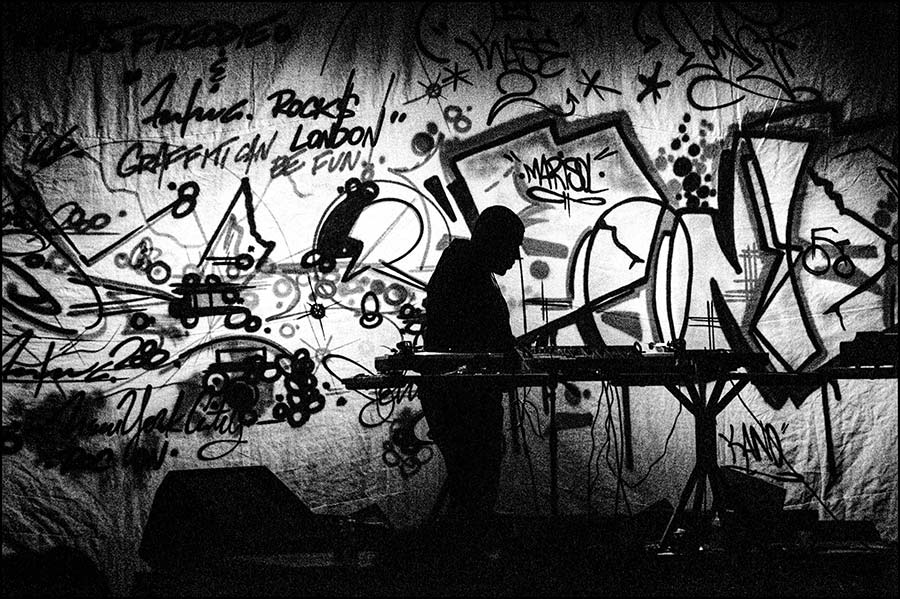
Mr. Corio allows us to show his images here of that event, which he identified as being part of the London stop of the NY City Rap tour, November 23rd, 1982. Assessing photos and the relic itself, one surmises that it was not signed by all the persons named necessarily since its function was a marquee naming of participants of the tour as well as a vehicle of visuals.
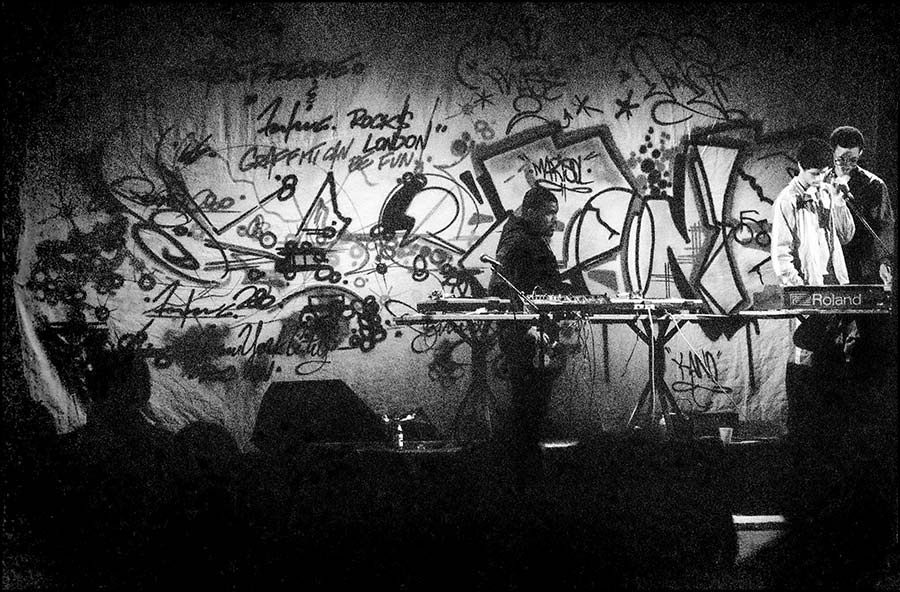
Corio later posted images from the event on his Instagram with his current recounting, but we like this older one from his website, as it is lyrical.
“Welcome to the future. This was one of the first hip-hop shows in London and it was at my favourite place to shoot gigs. Bam had brought with him vibrant visions of the New York street in the form of graffiti legends Fab Five Freddy and Futura 2000. While he played, they spray-painted the backdrop. Londoners had never experienced any gig like this before – with break-dancers from Bambaataa’s Zulu Nation and a team of skippers doing the double-dutch. ‘Planet Rock’ and ‘Looking For The Perfect Beat’, two singles of 1982, along with Grandmaster Flash’s ‘The Message’, gave notice of a new musical force breaking out of New York – hip-hop and electro – and it was all rising straight off the record decks. It was amazing to witness this revolution in person.”
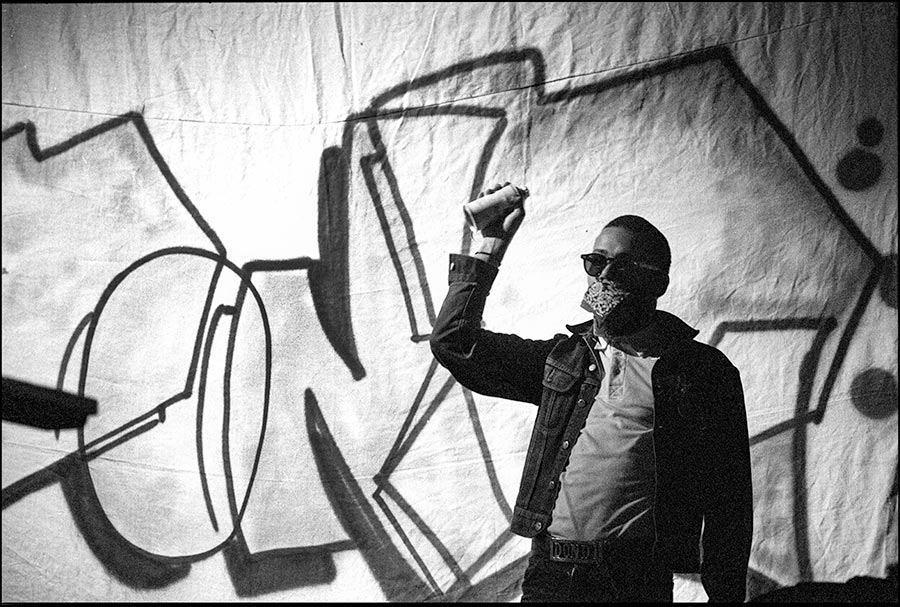
As you stand before the piece, you may better appreciate the human scale of some events that have stepped into a golden storied past. Without these antecedents, many would not have known the art, music, and dance world as it evolved – nor appreciate the components that Hip Hop grew and evolved from. Looking at this unnamed banner, you remember again that once in a while a piece of art transcends itself, and becomes a historical document.
1970s / Graffiti / Today is an opportunity for fans and historians to see some of these works before they disappear into private collections. That alone is worth the trip.
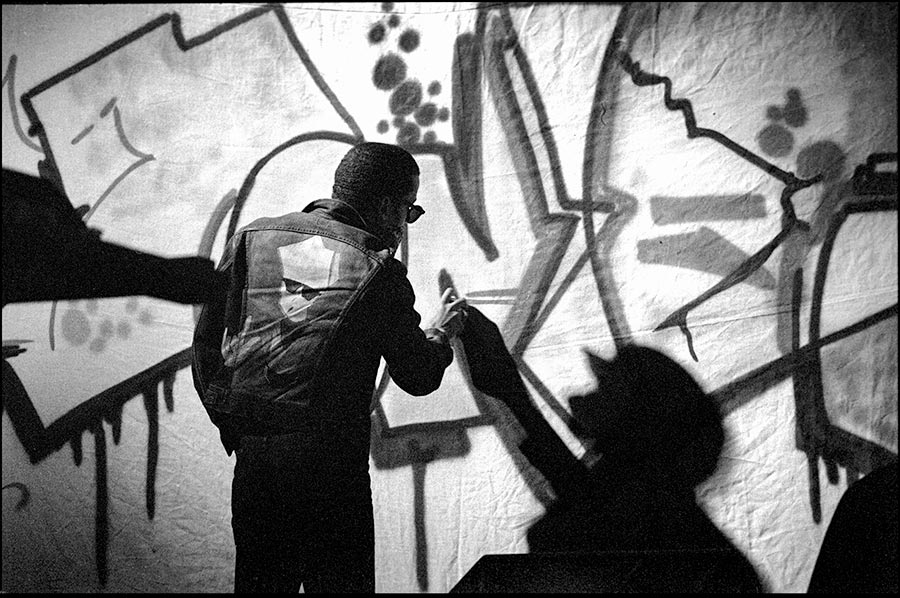
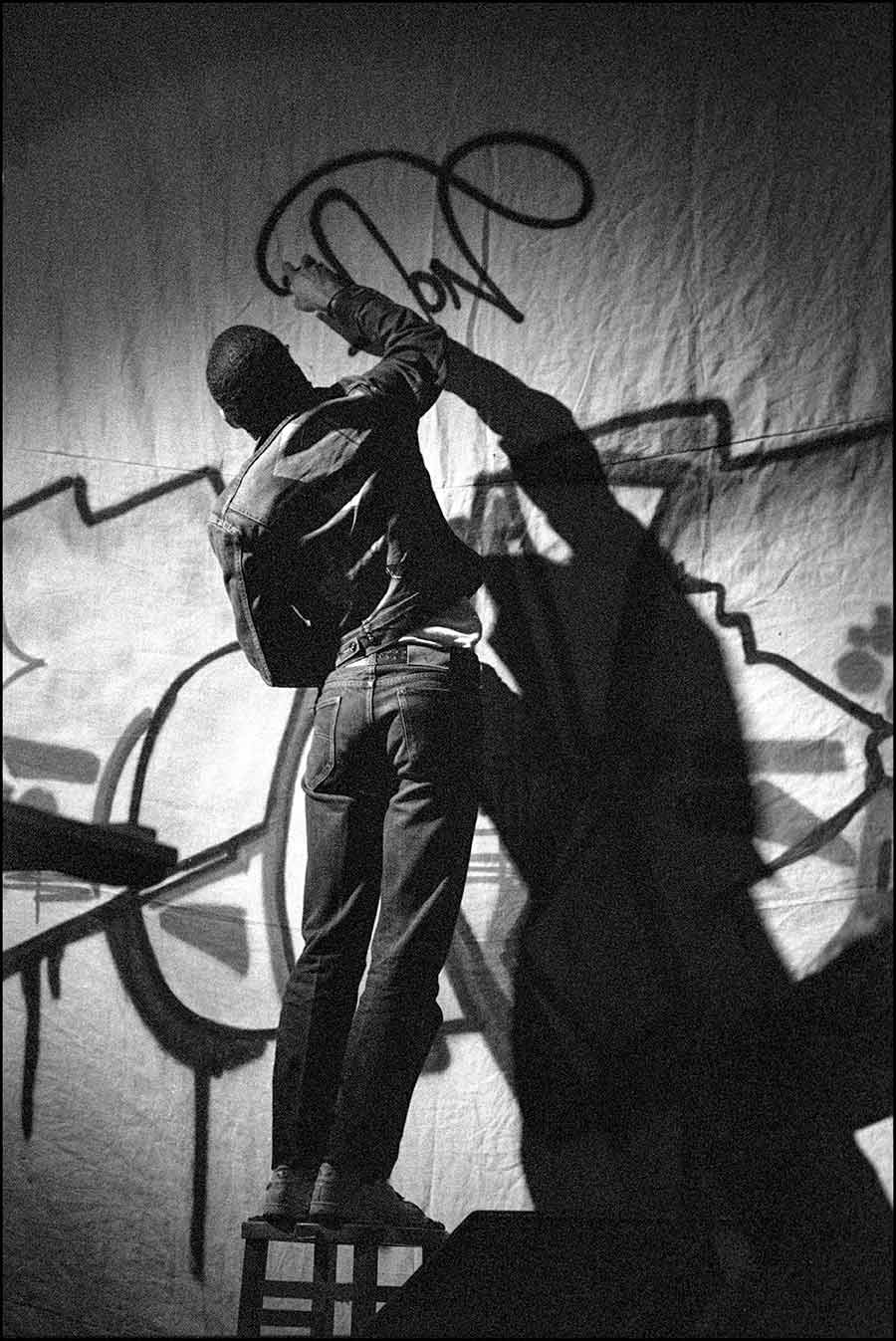
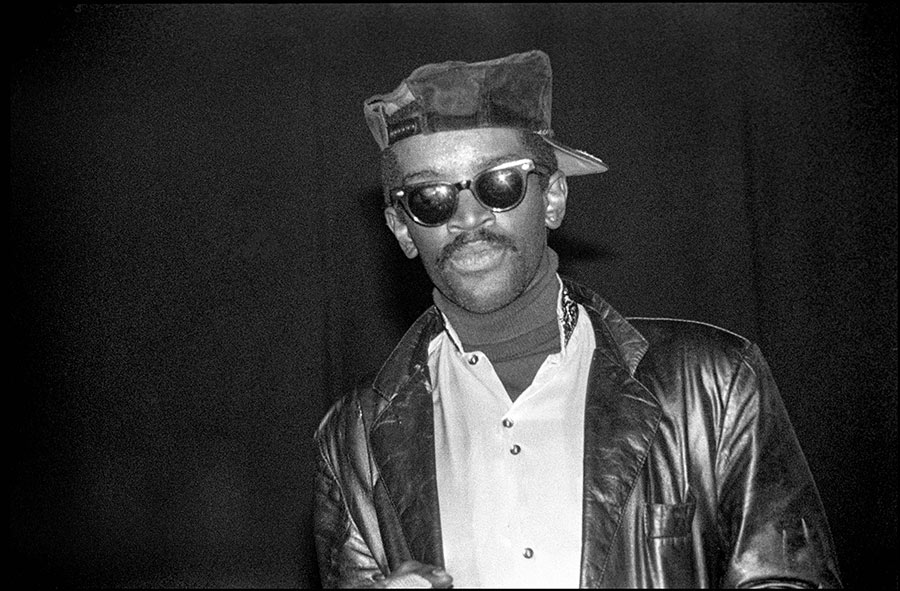
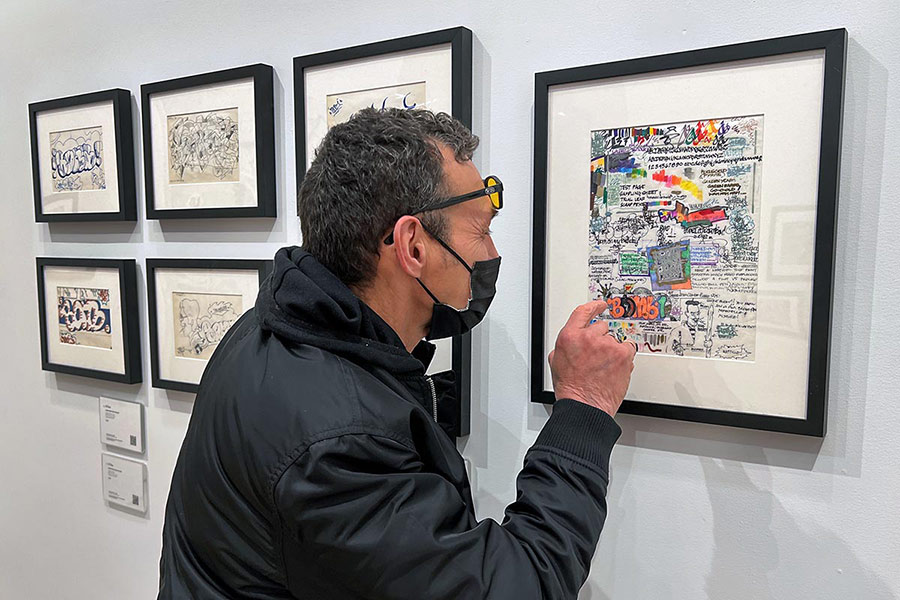
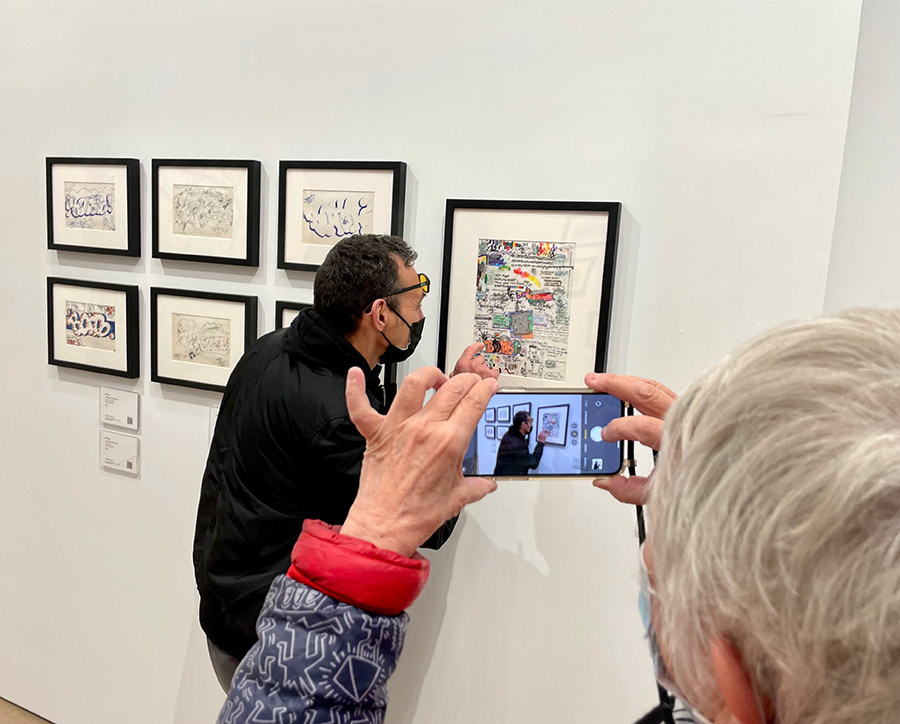
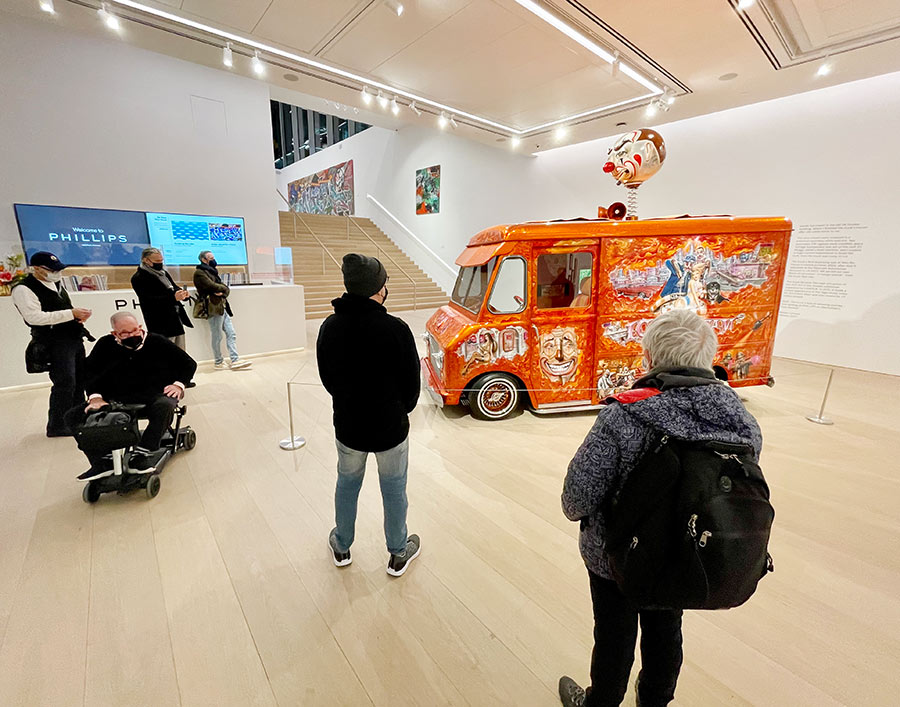
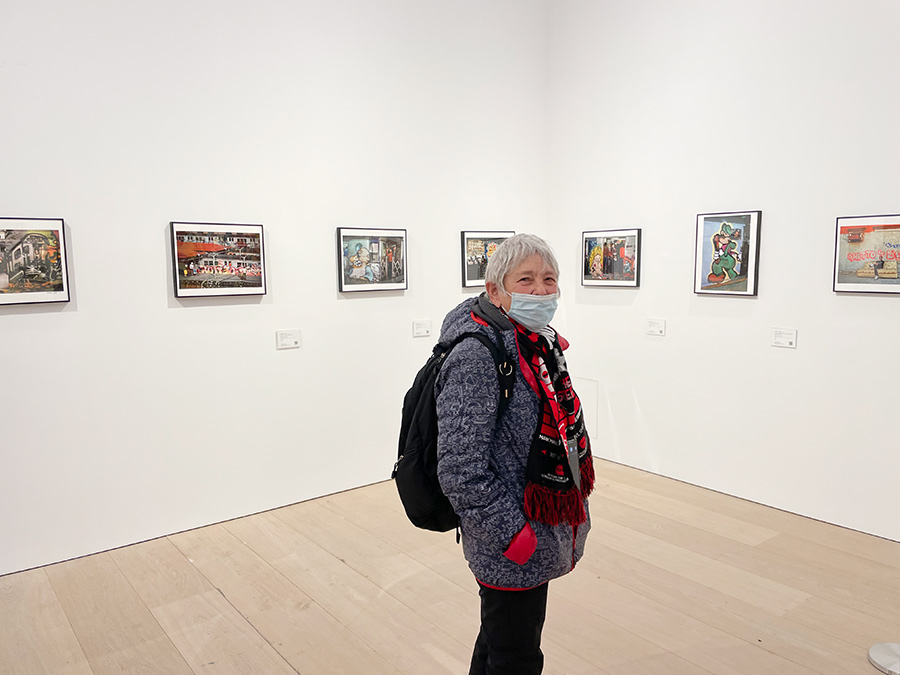
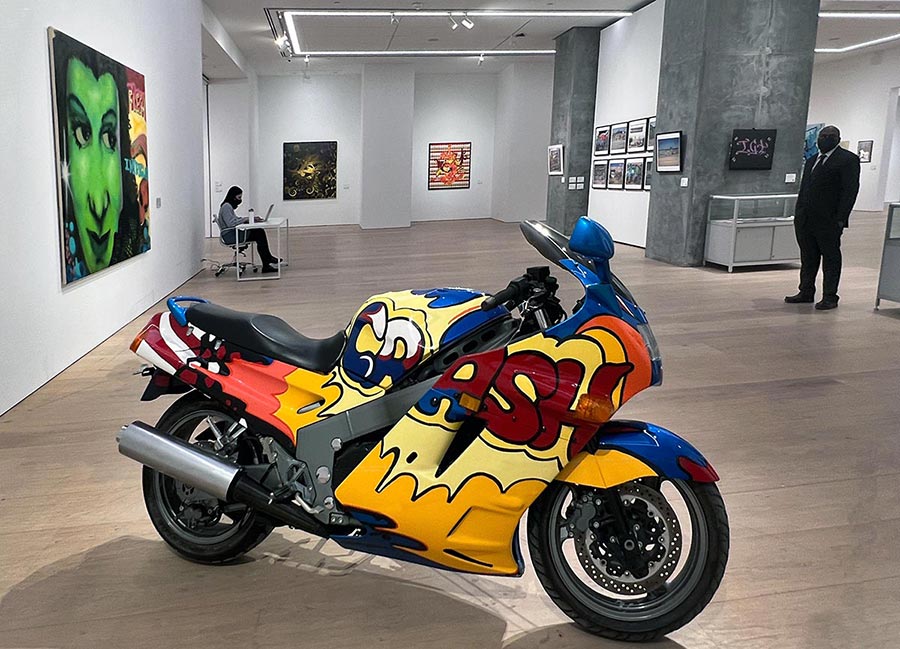
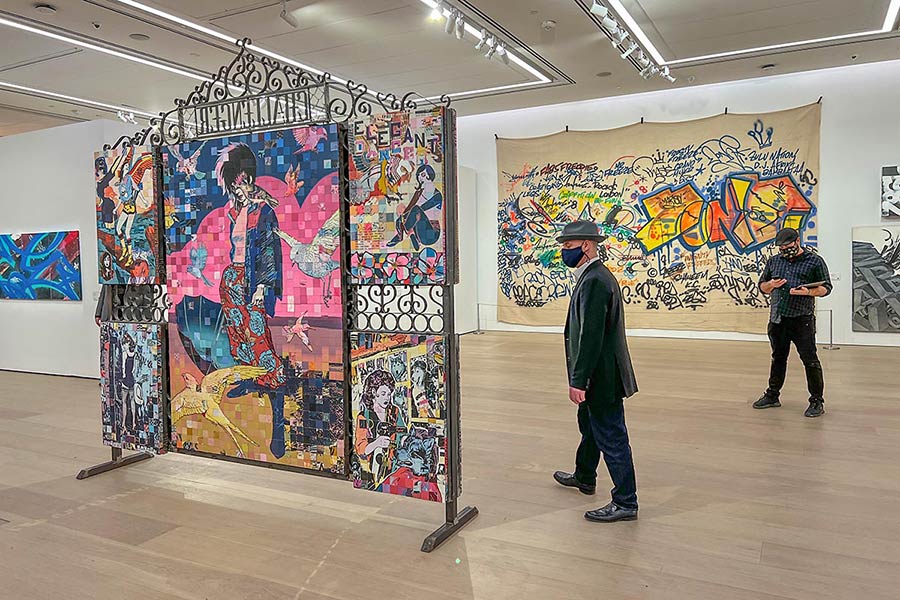
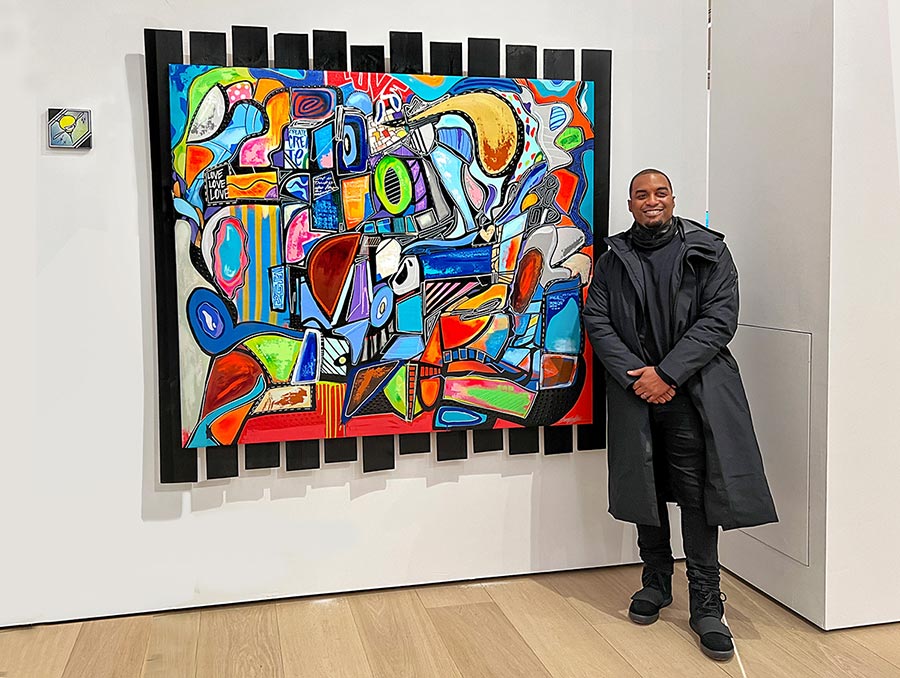
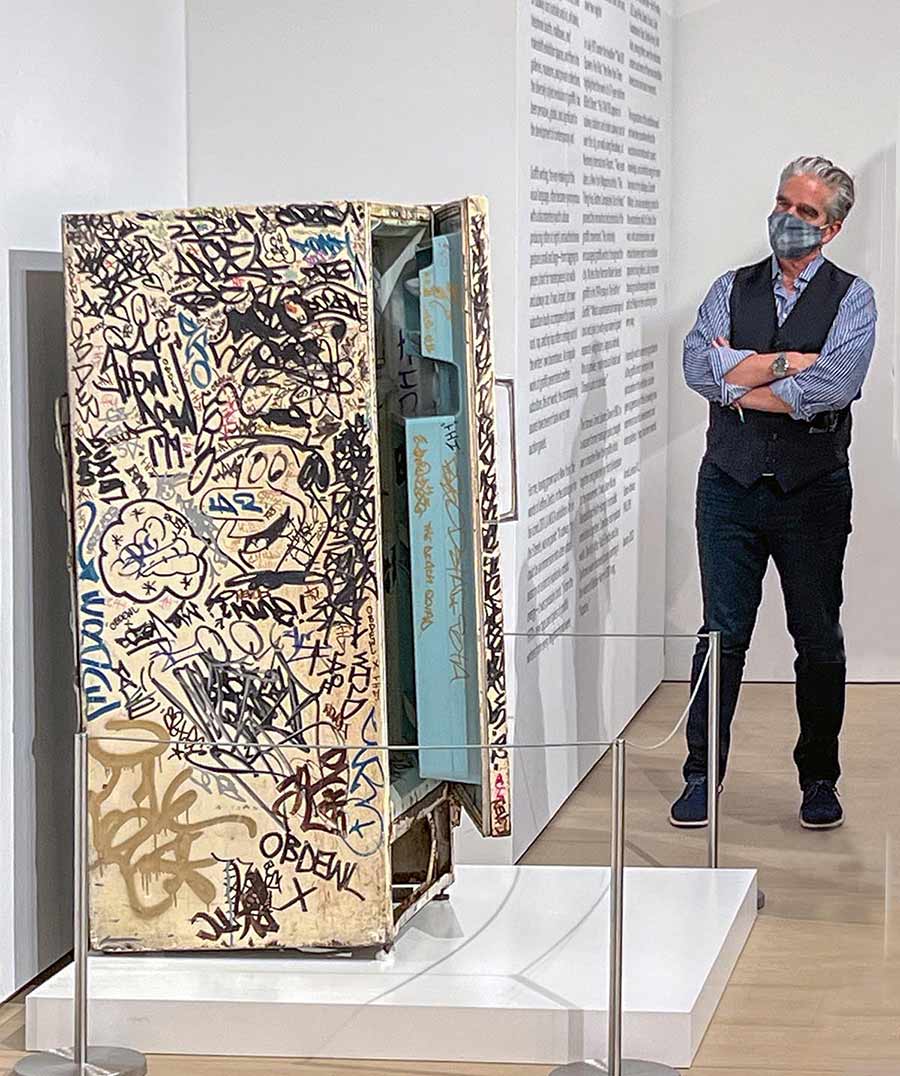
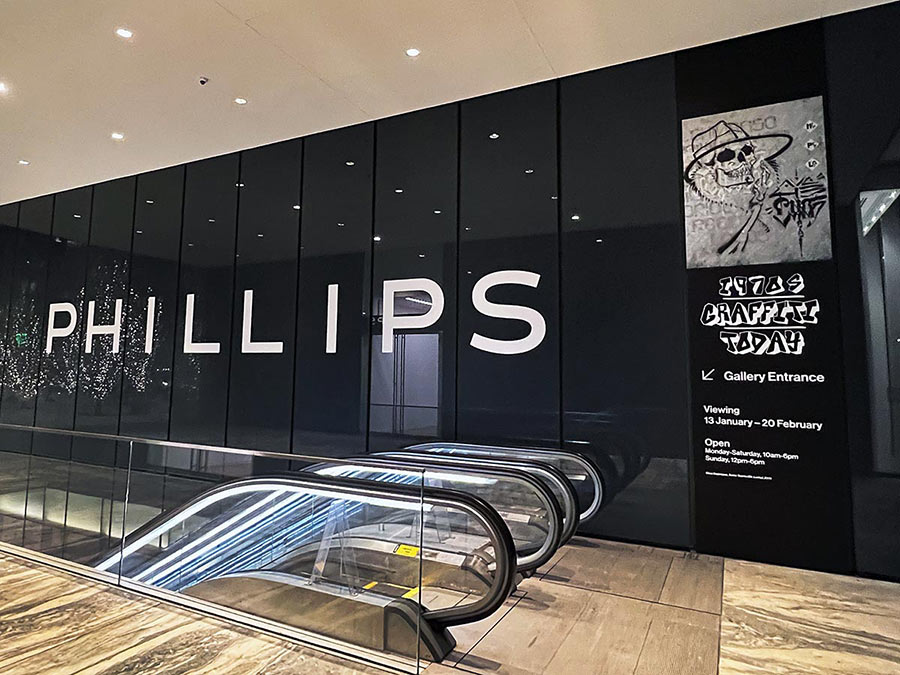
1970s / Graffiti / Today at Phillips Auction House in Manhattan, NY is open to the public until February 20, 2022.
Our sincere thanks to photographer Martha Cooper for contributing her photos to this article. Her Instagram is @marthacoopergram
Thank you as well to the photographer David Corio for allowing us to use his historical photos here. To learn more about him and his work please go to www.davidcorio.com and his Instagram is @david.corio
 BROOKLYN STREET ART LOVES YOU MORE EVERY DAY
BROOKLYN STREET ART LOVES YOU MORE EVERY DAY